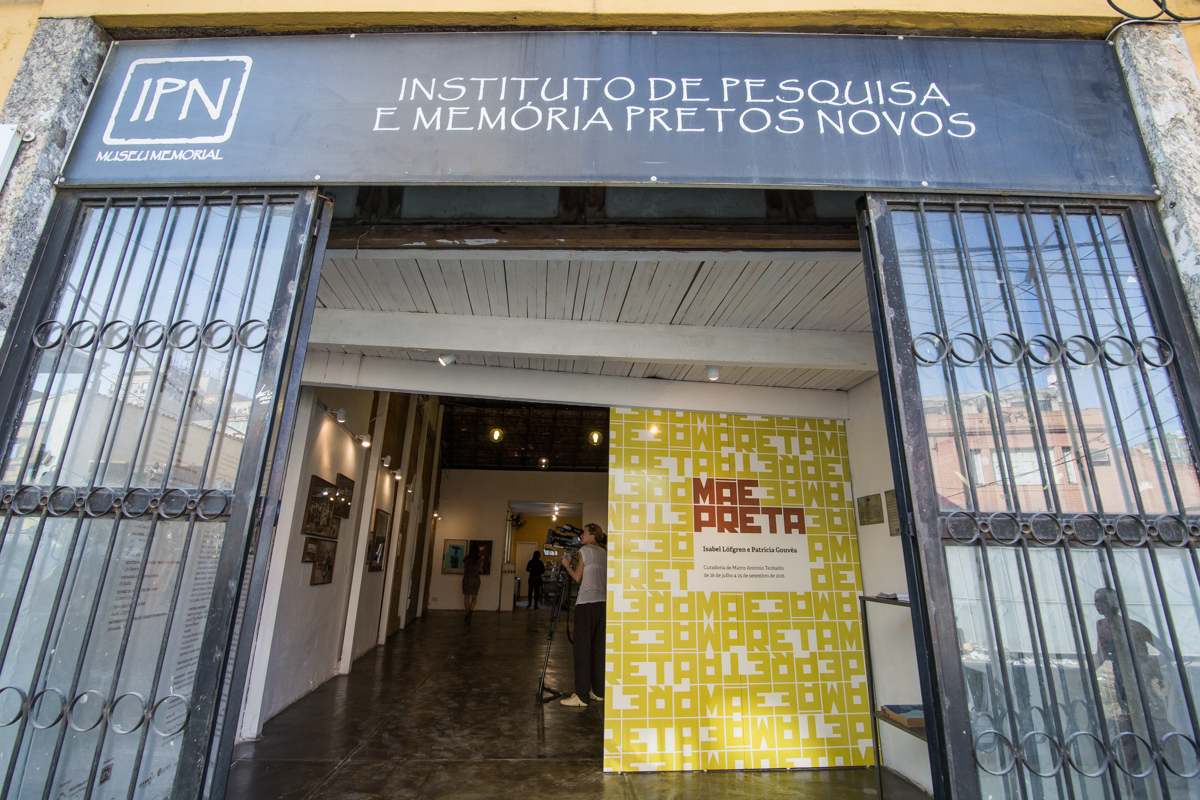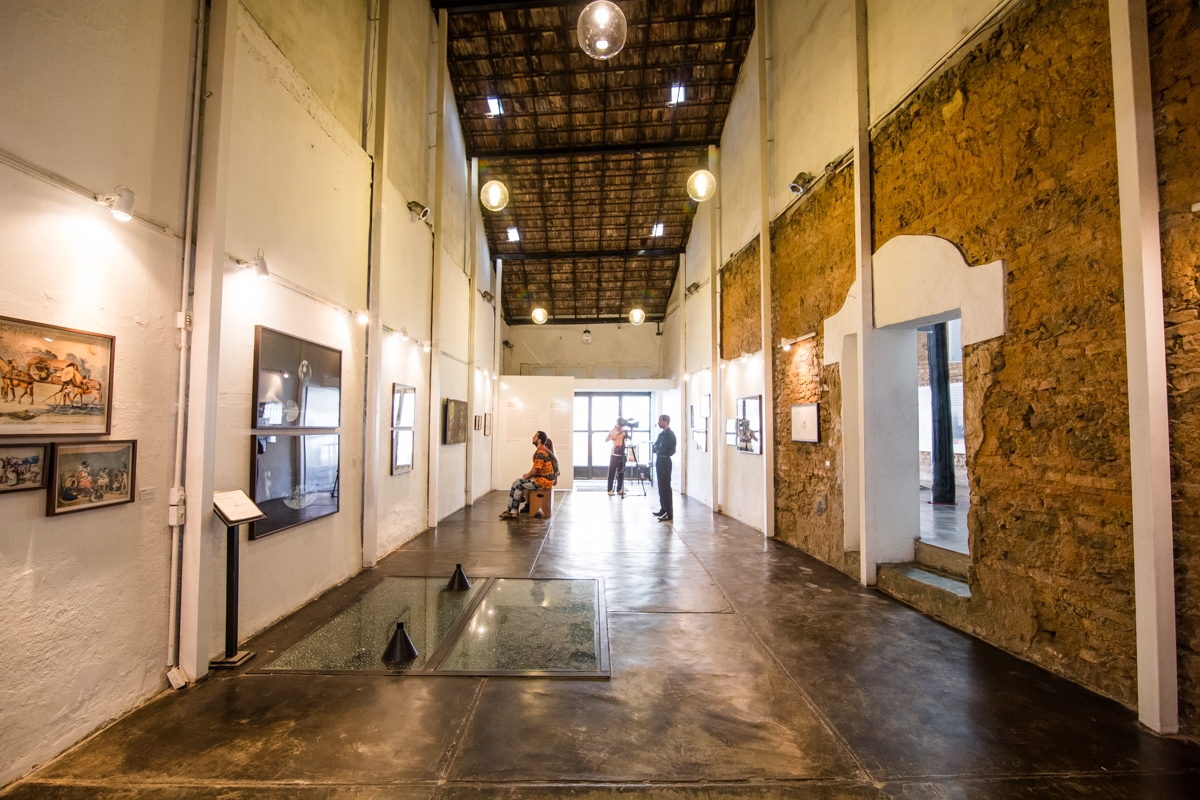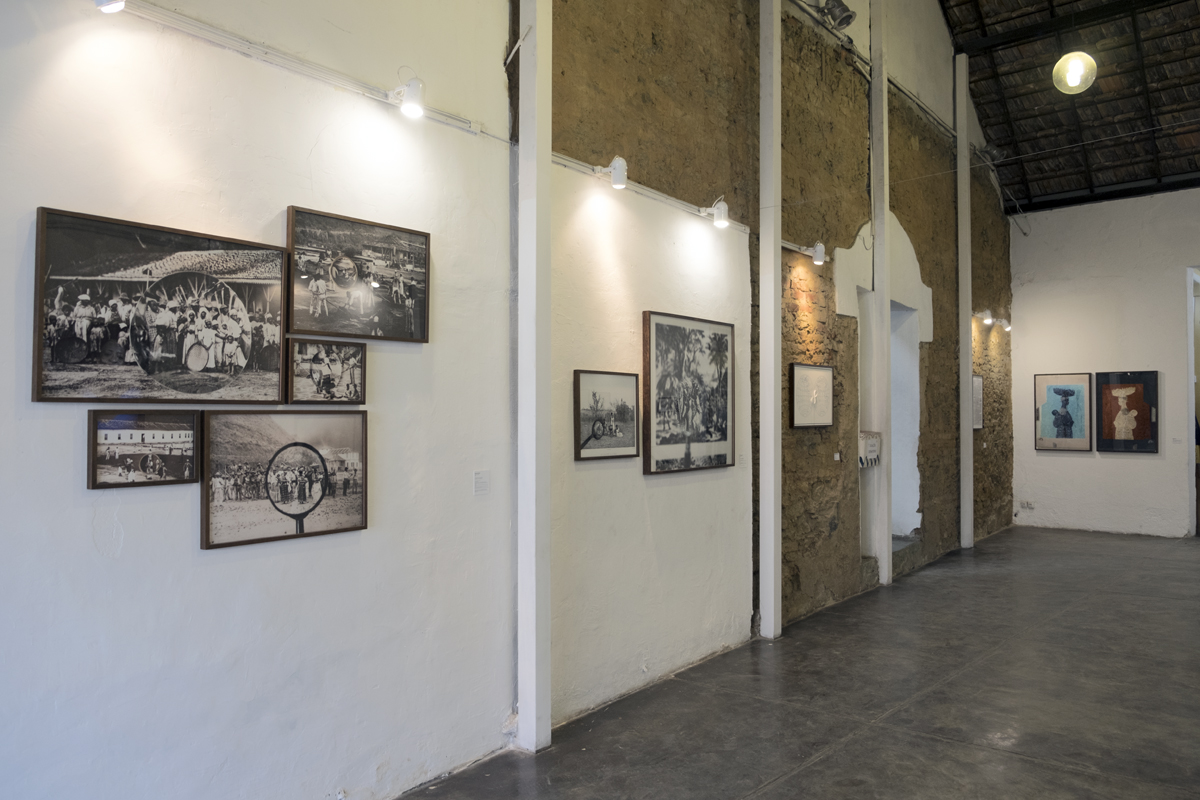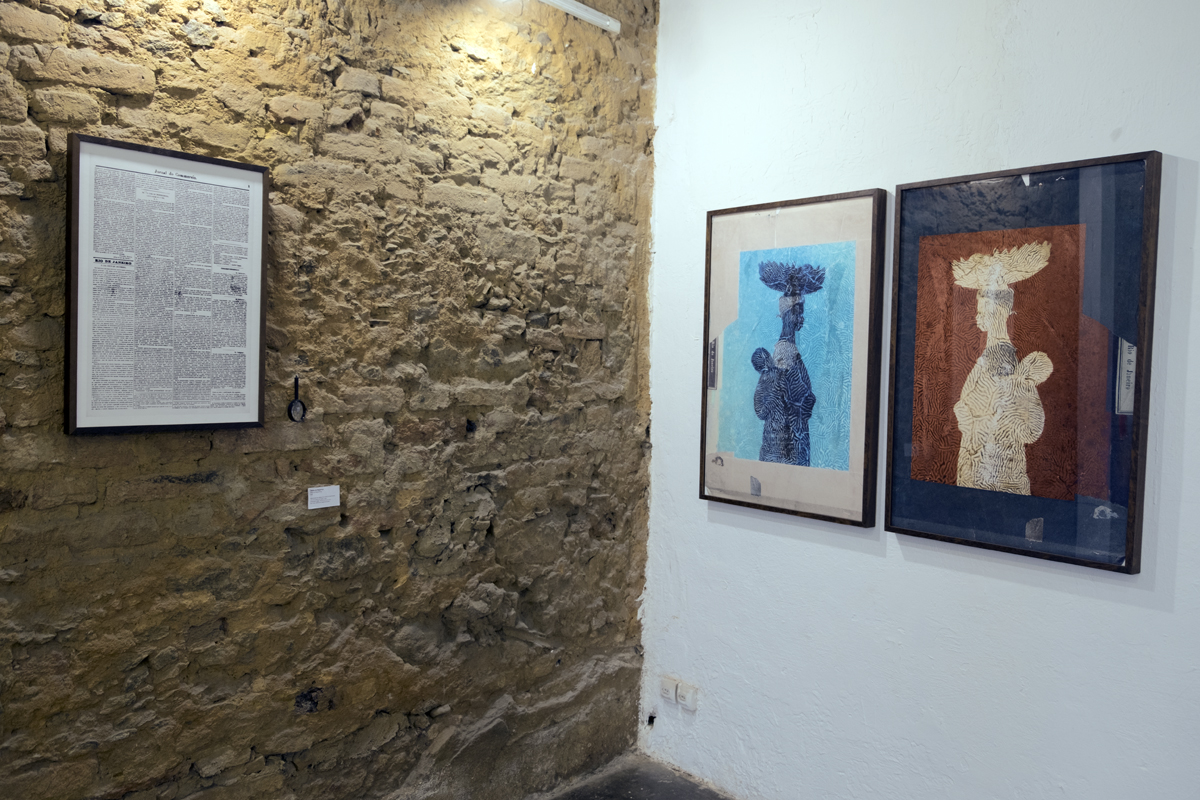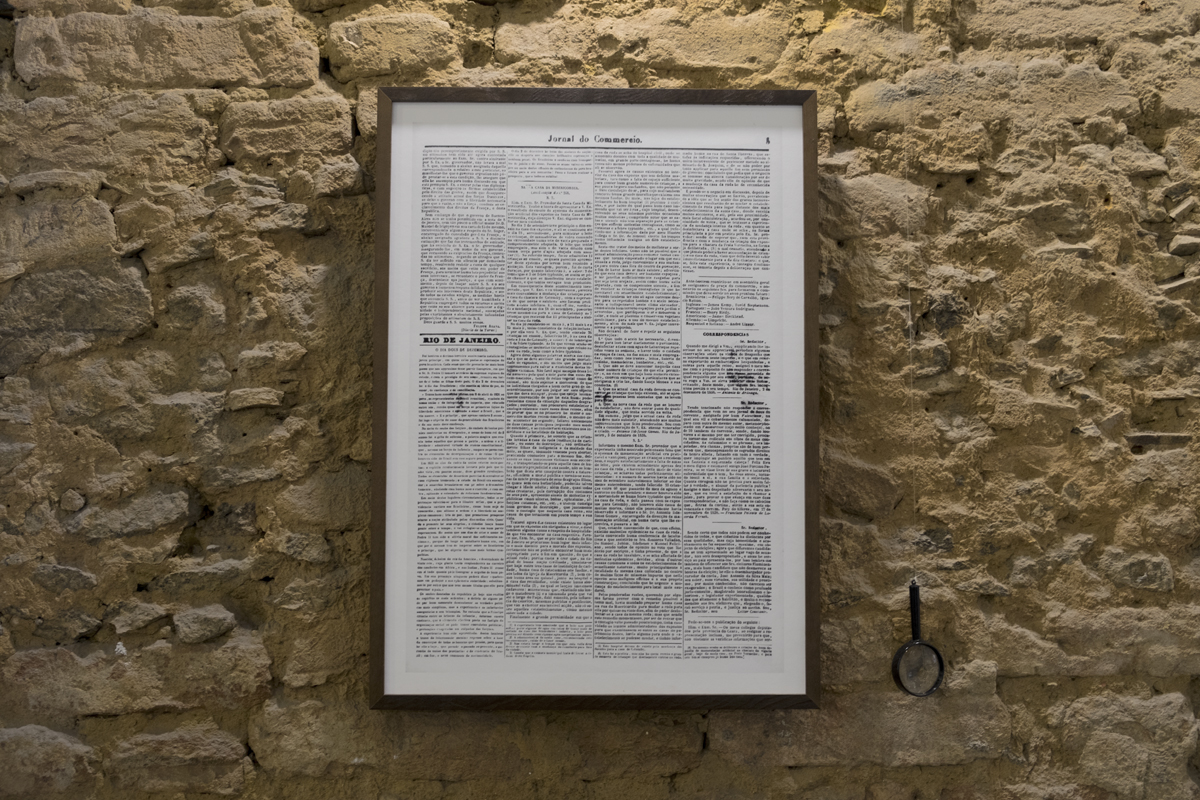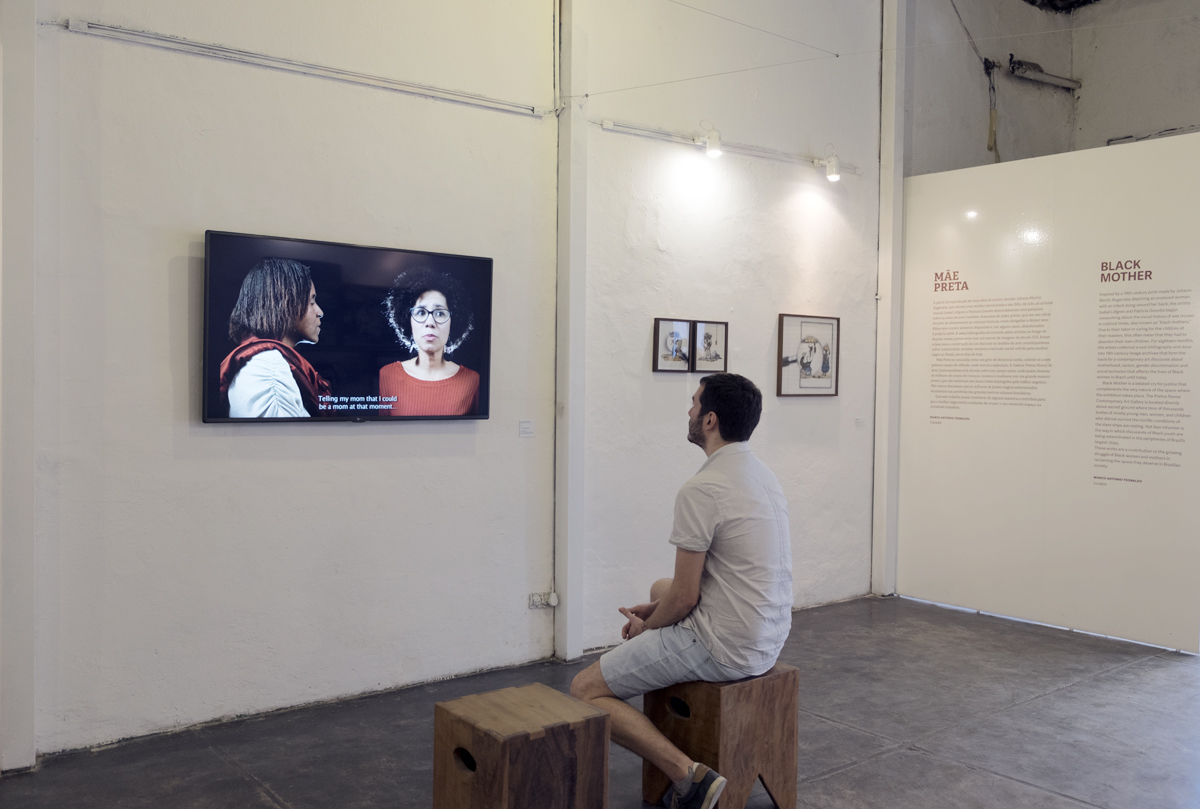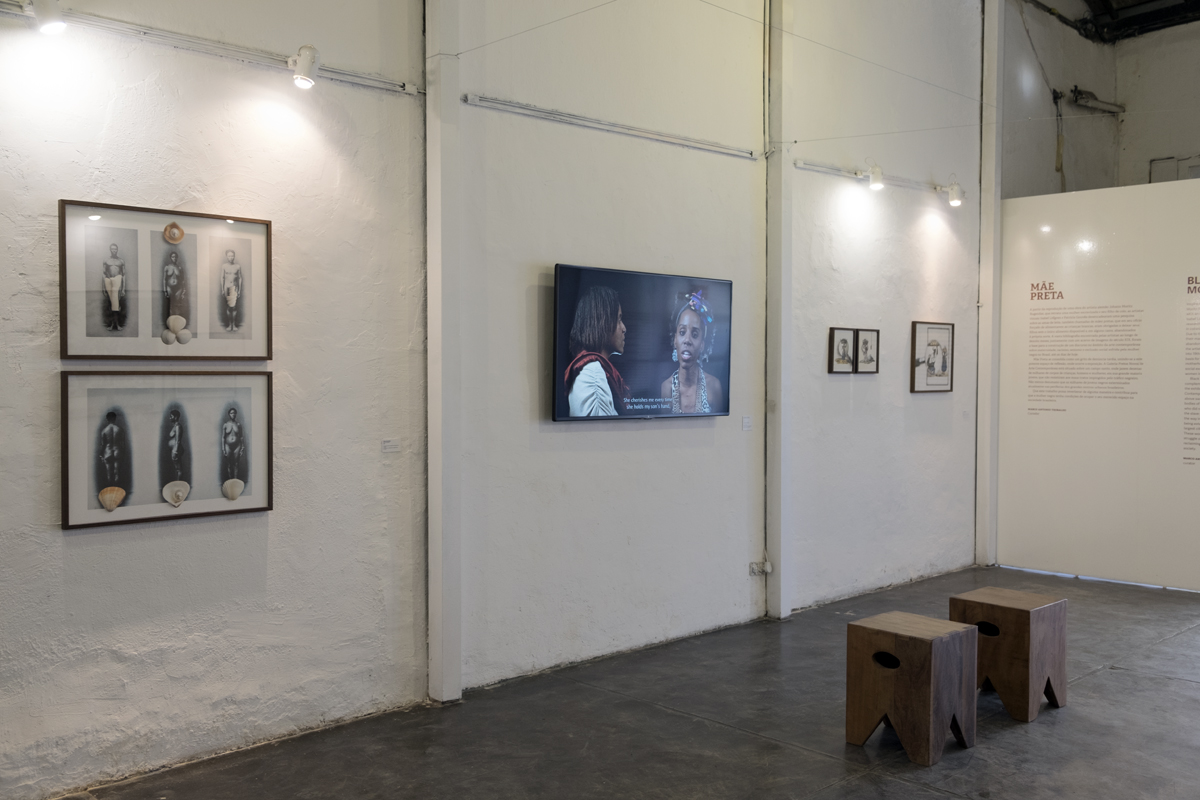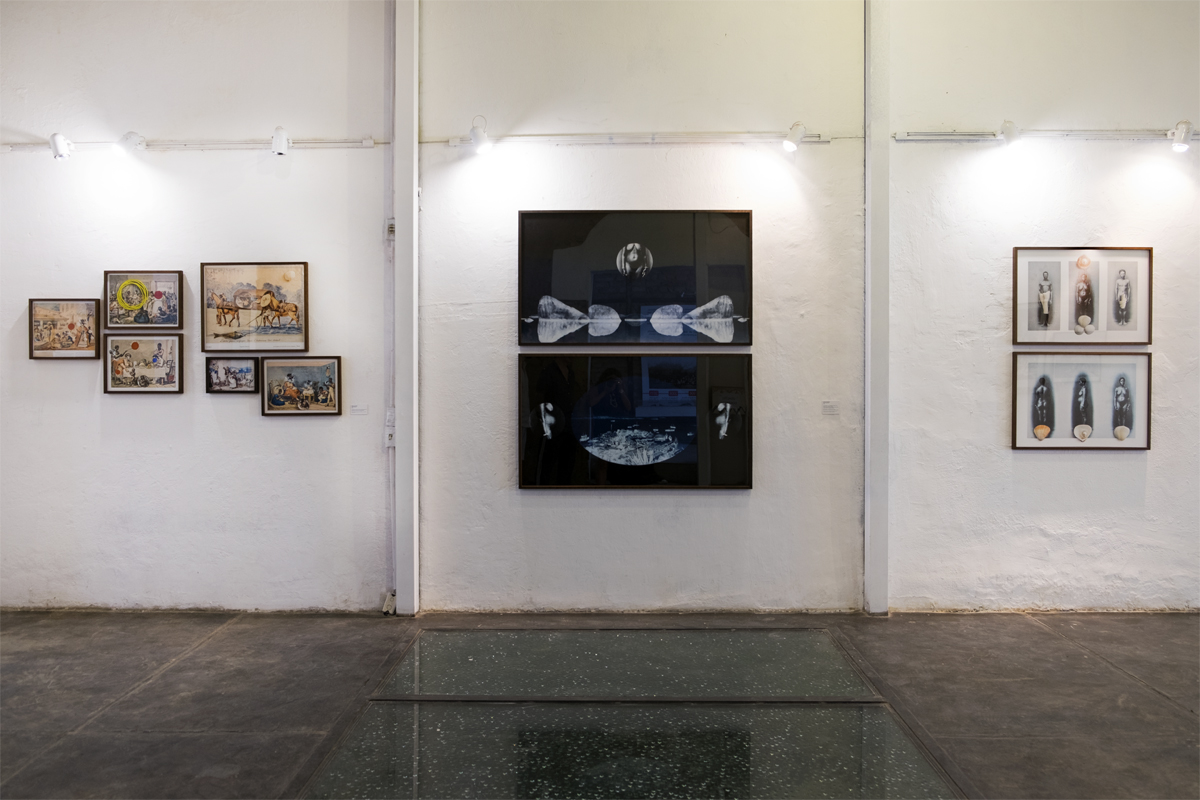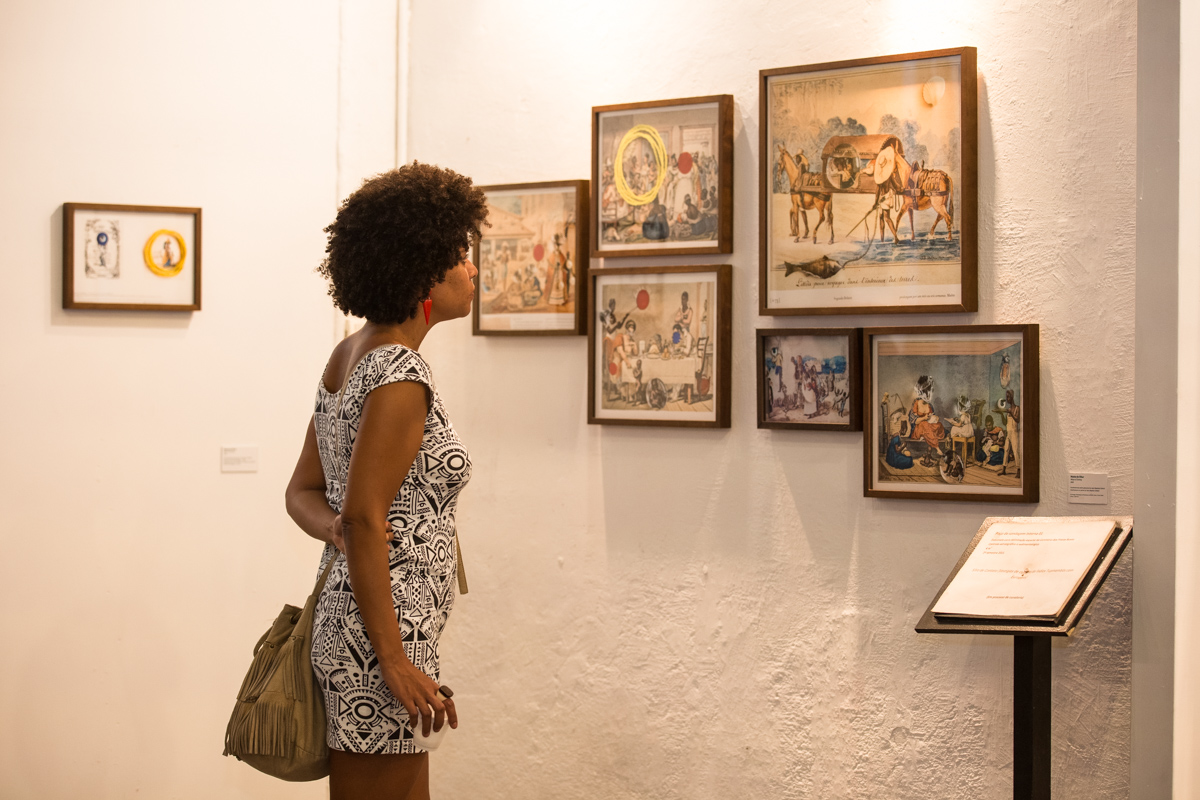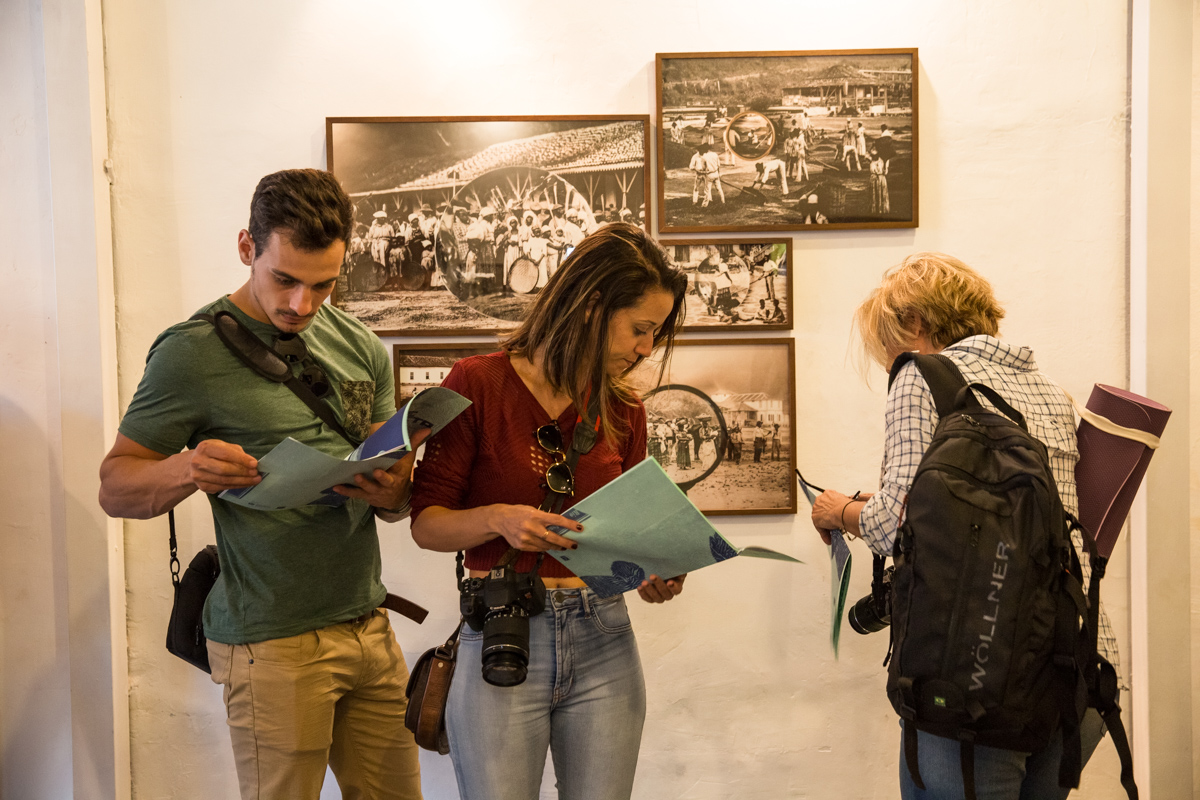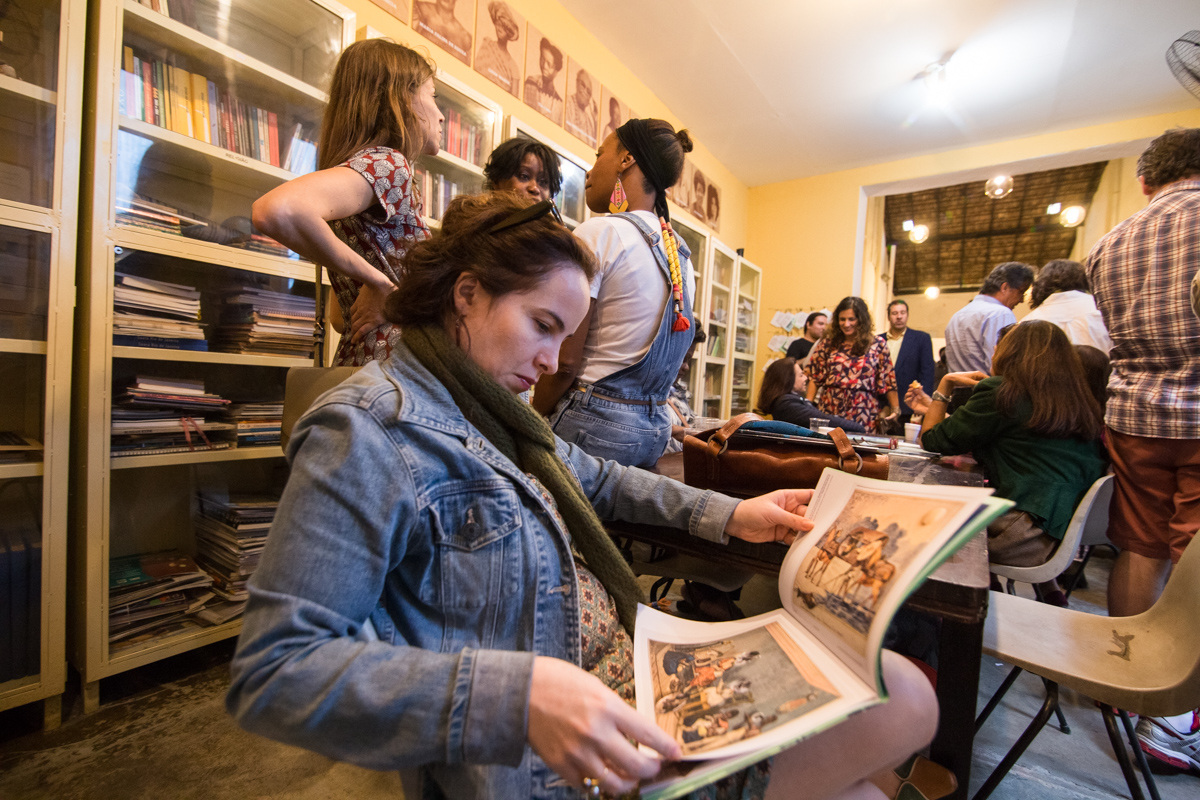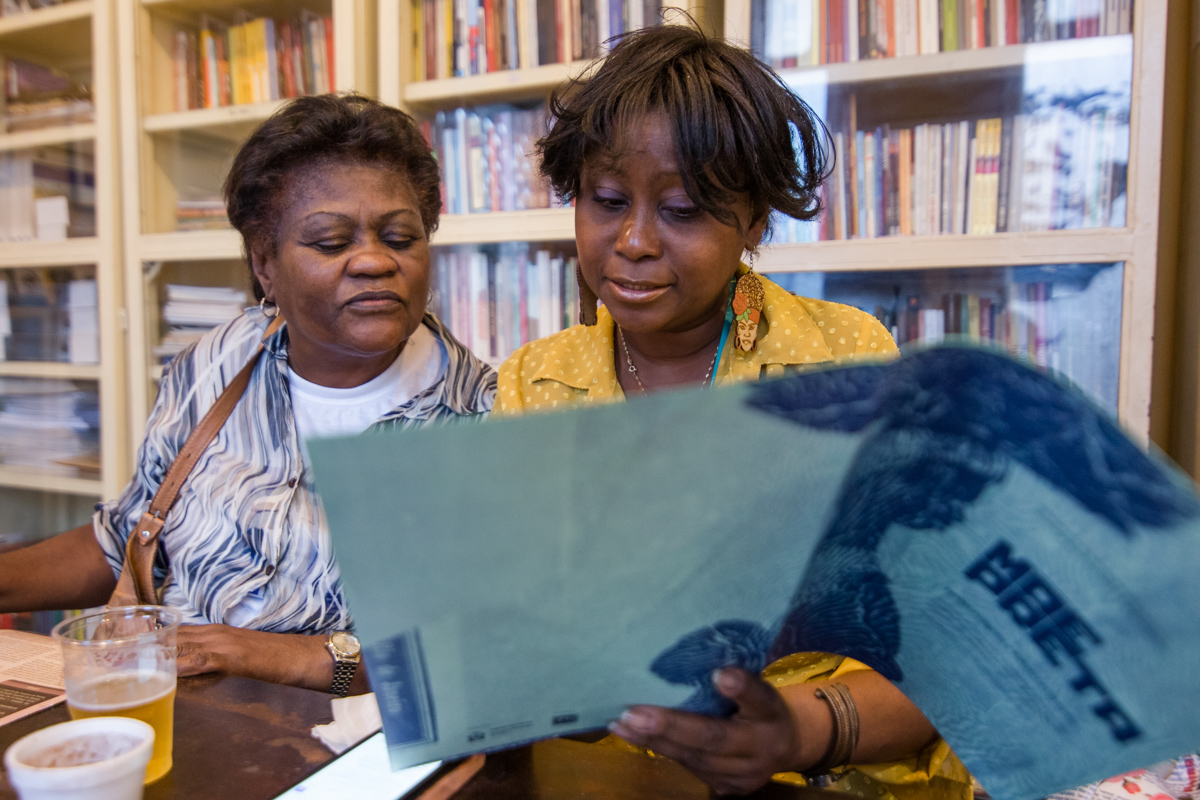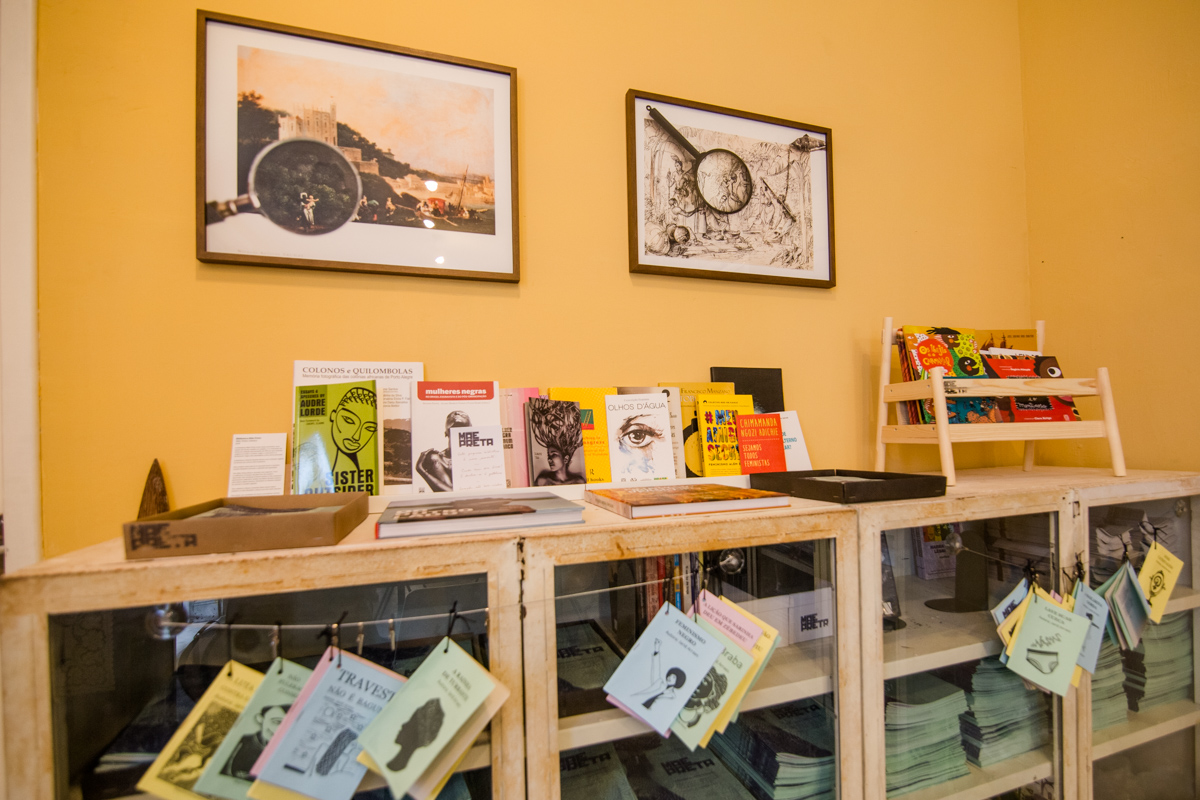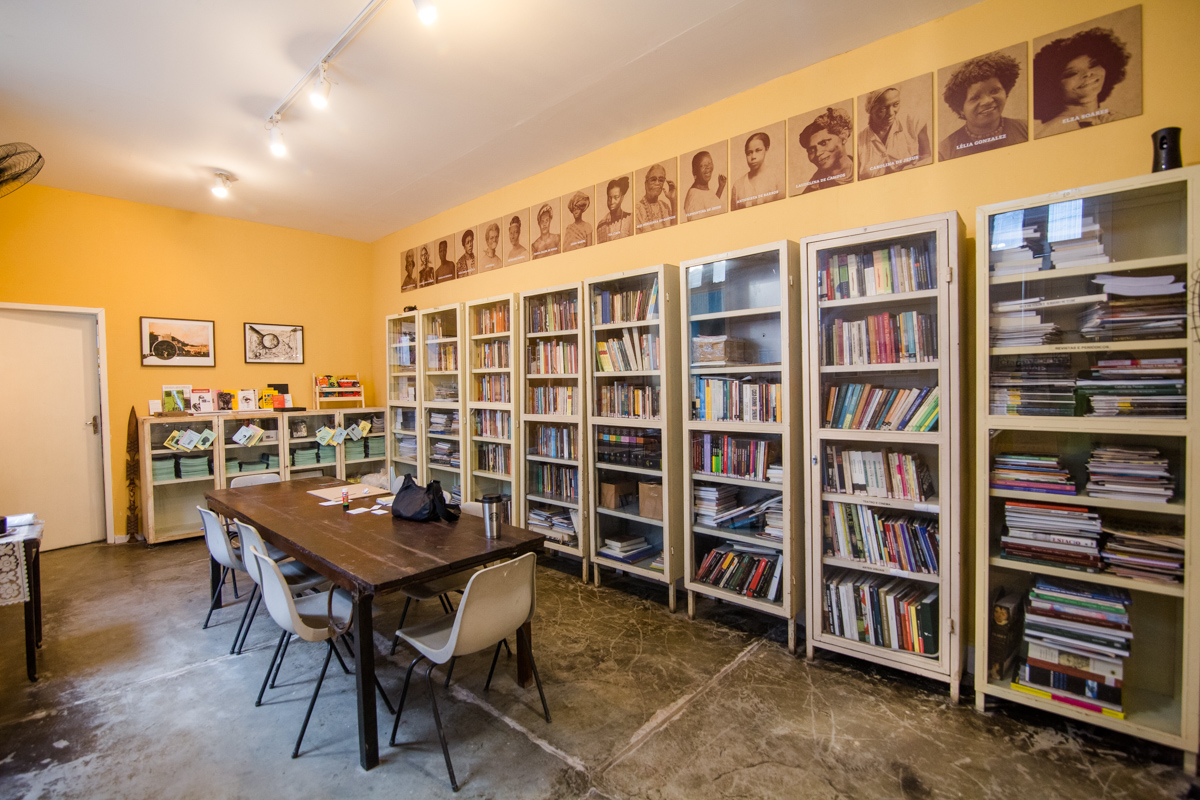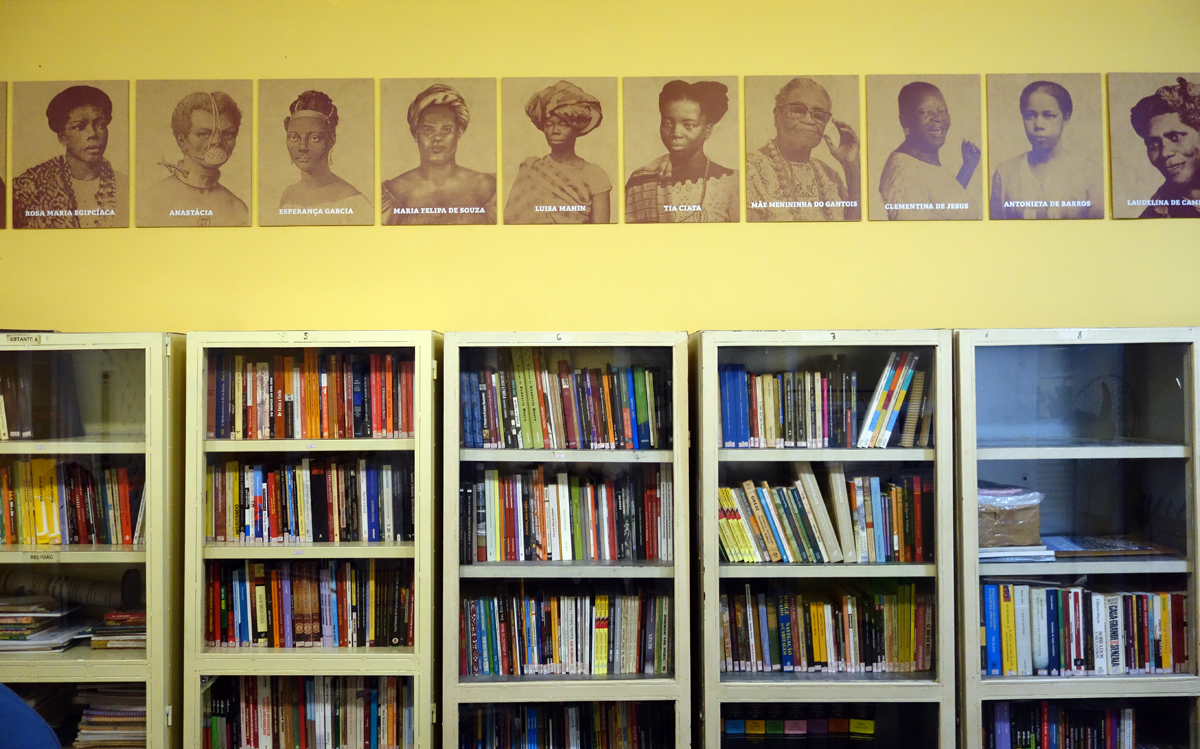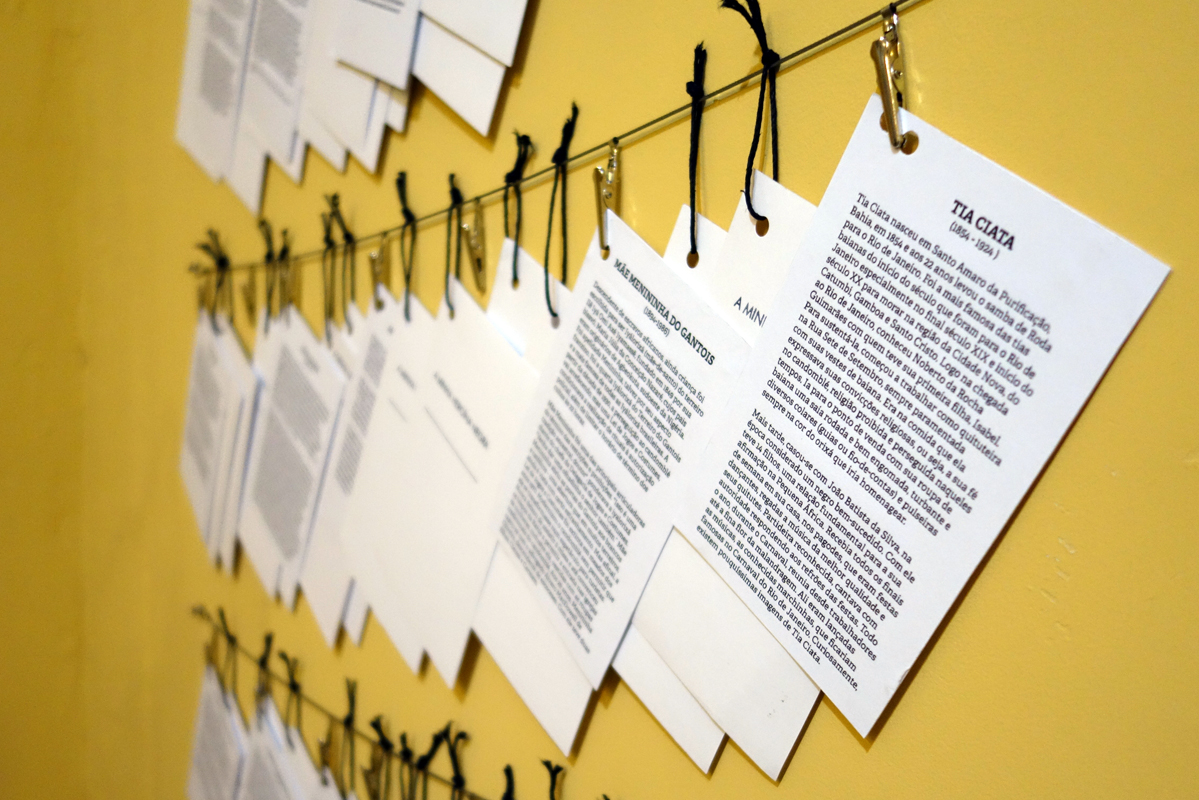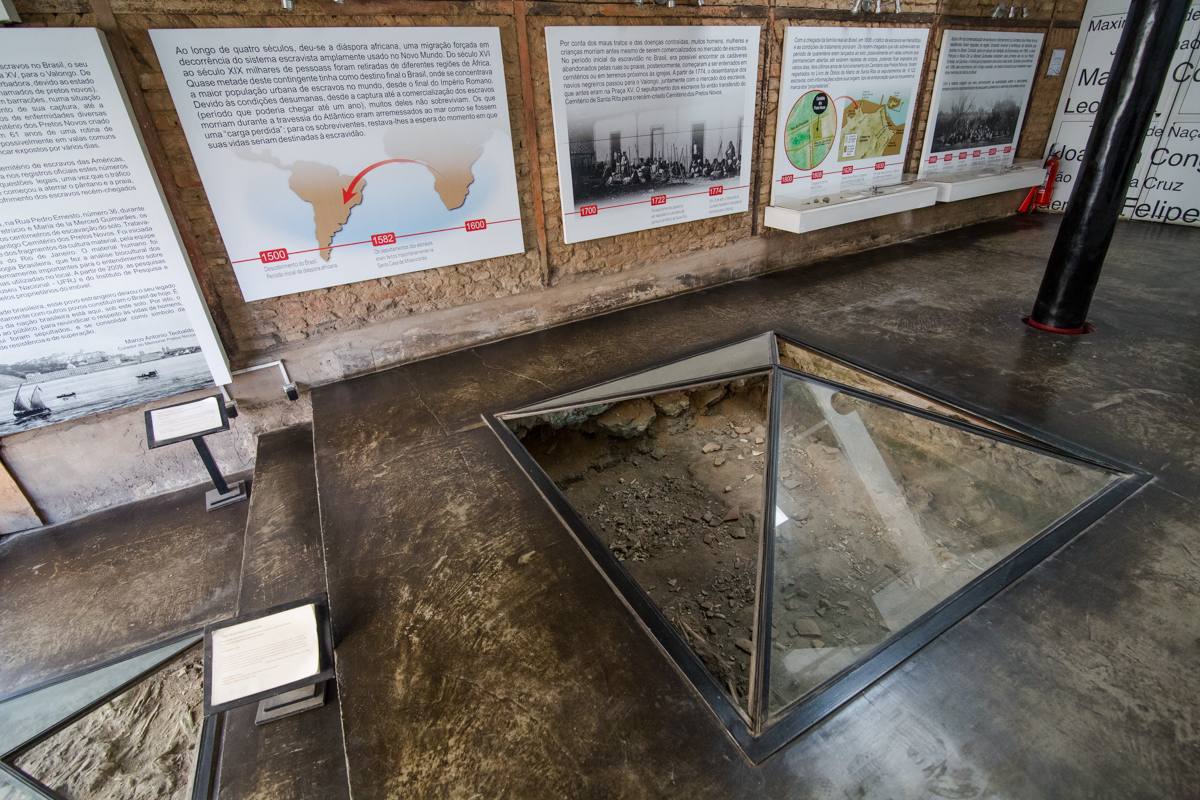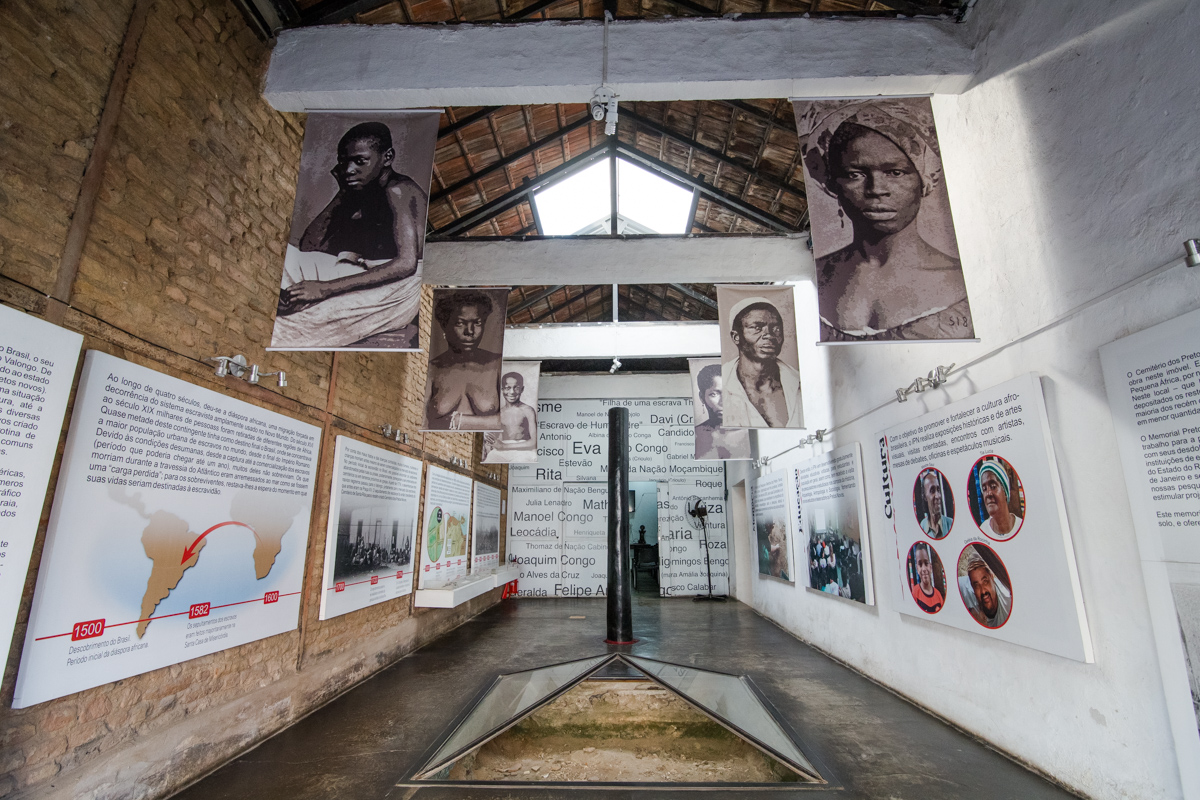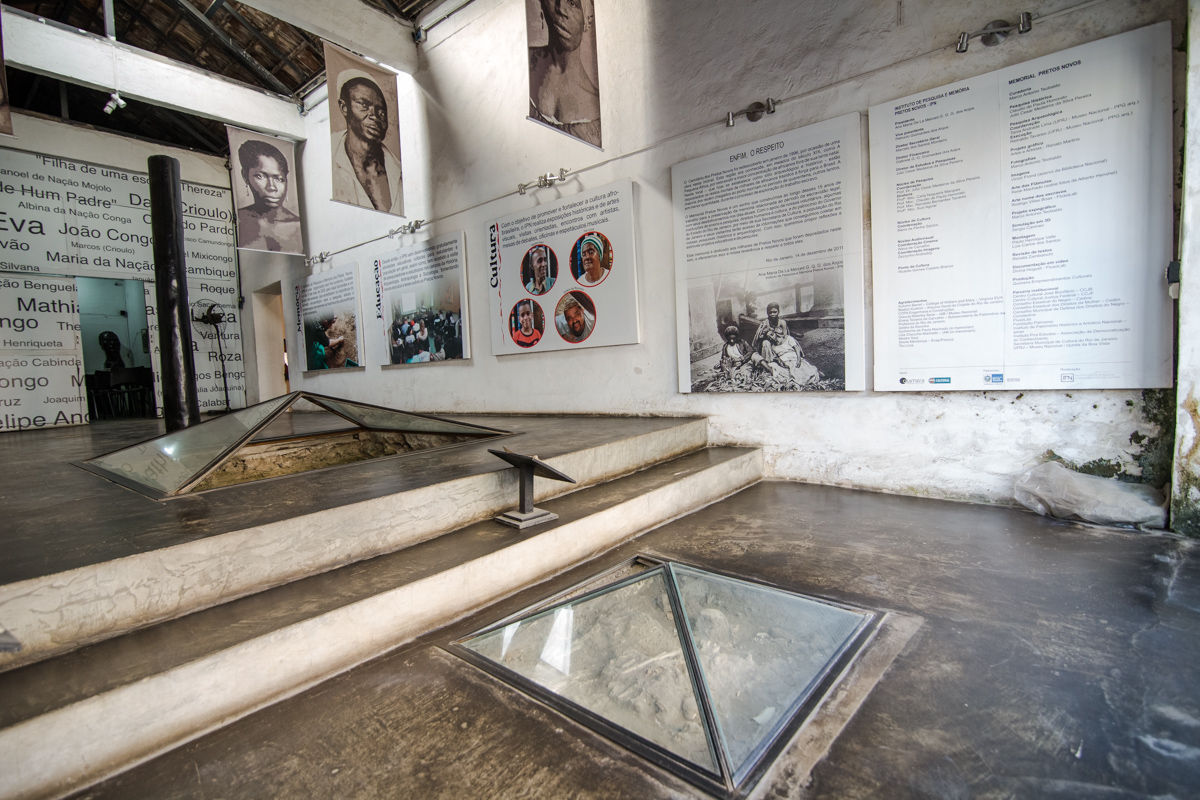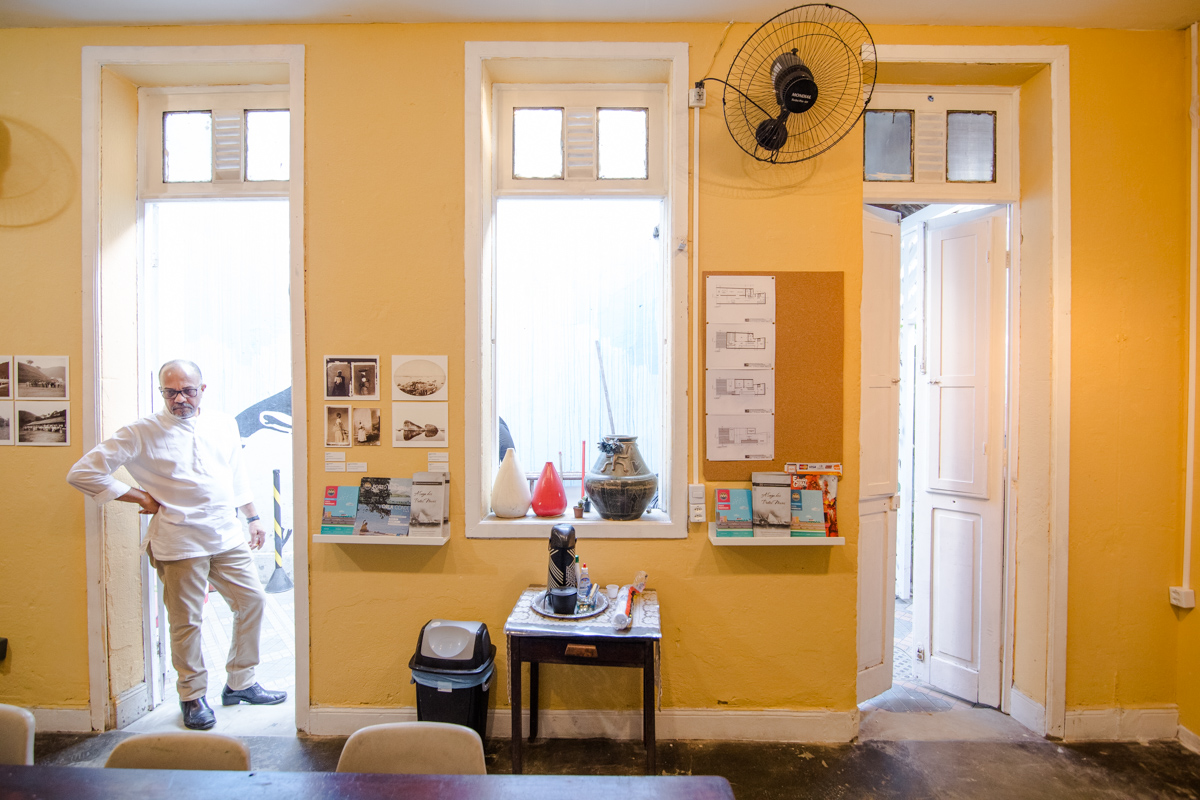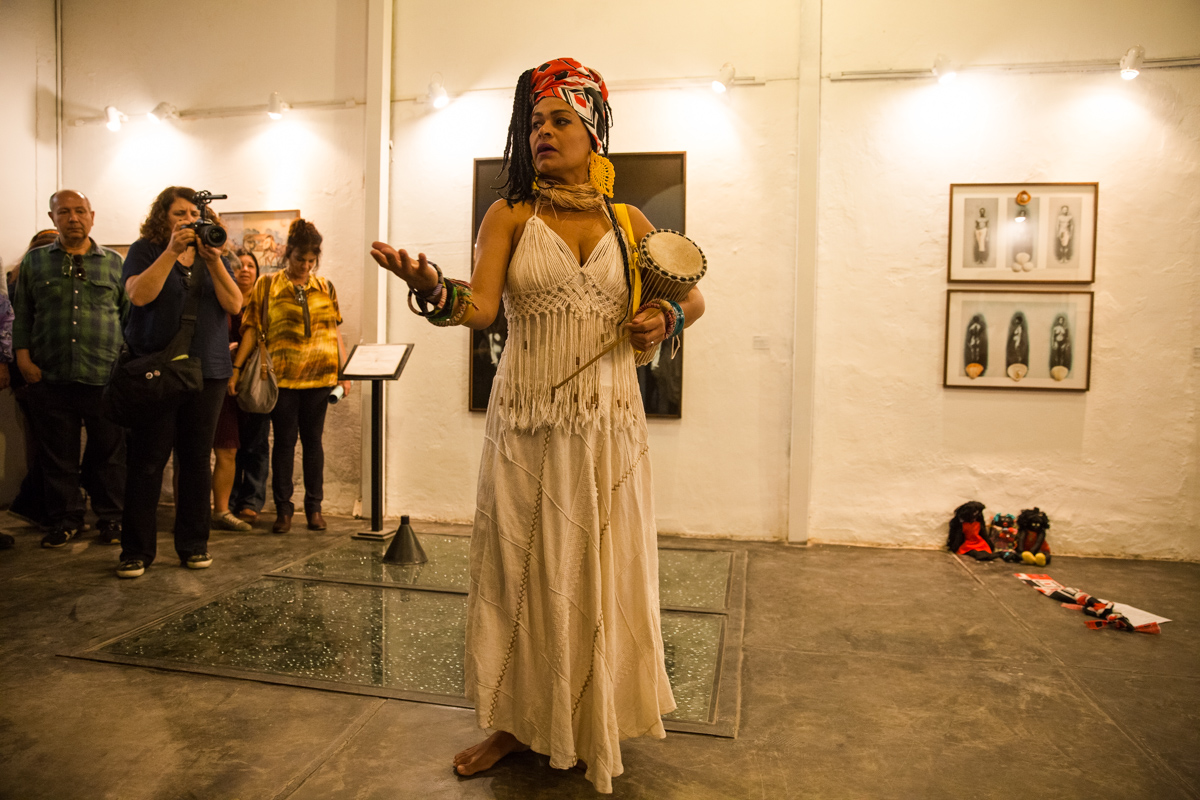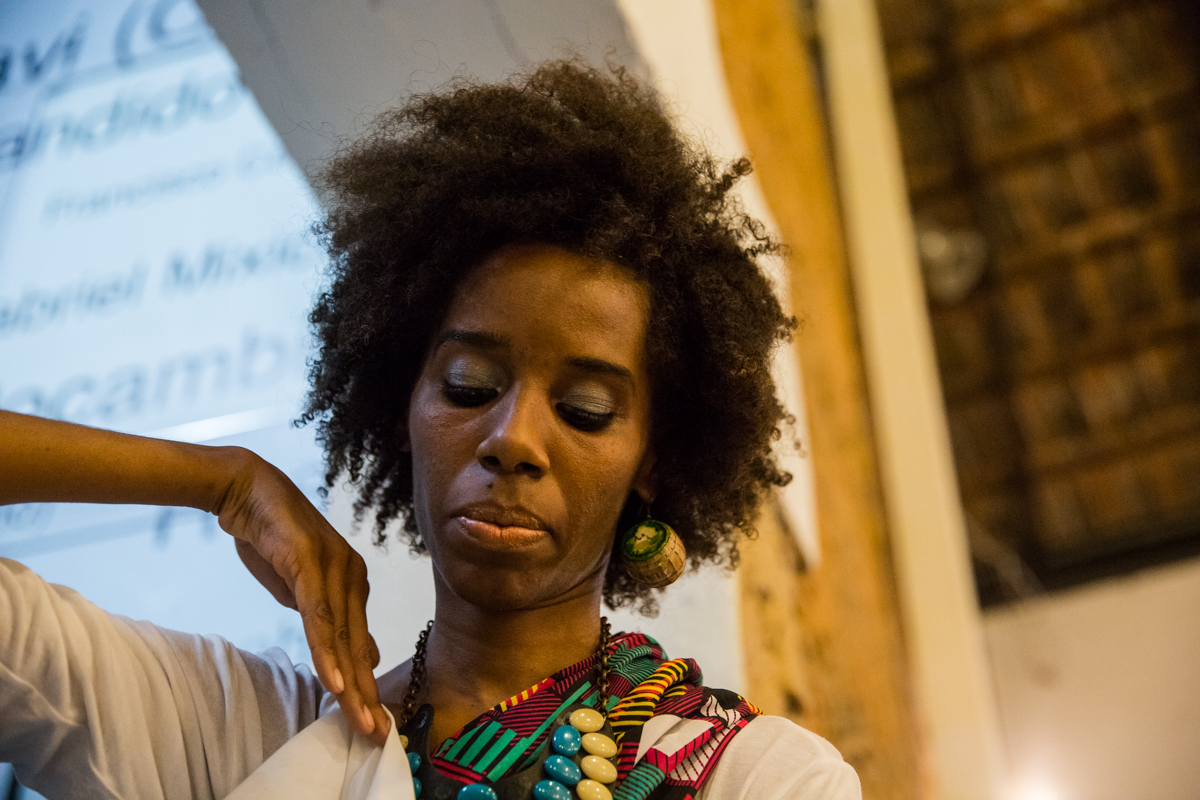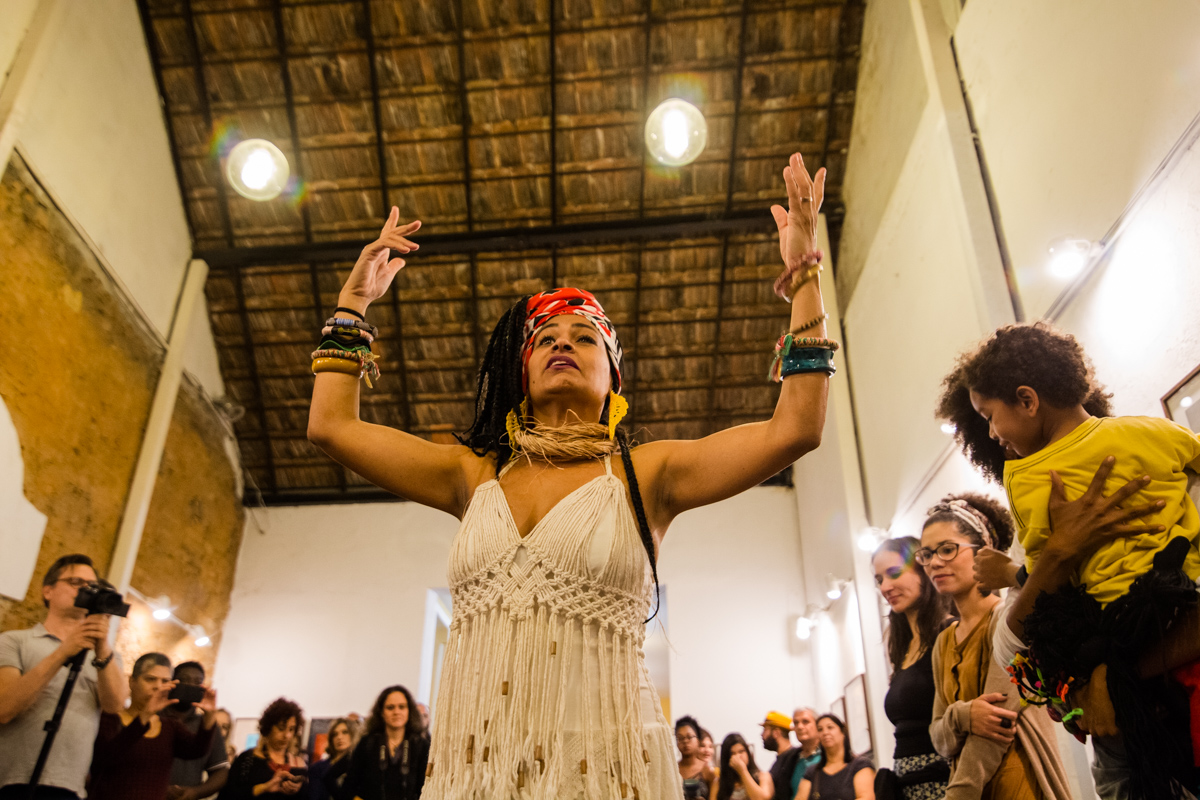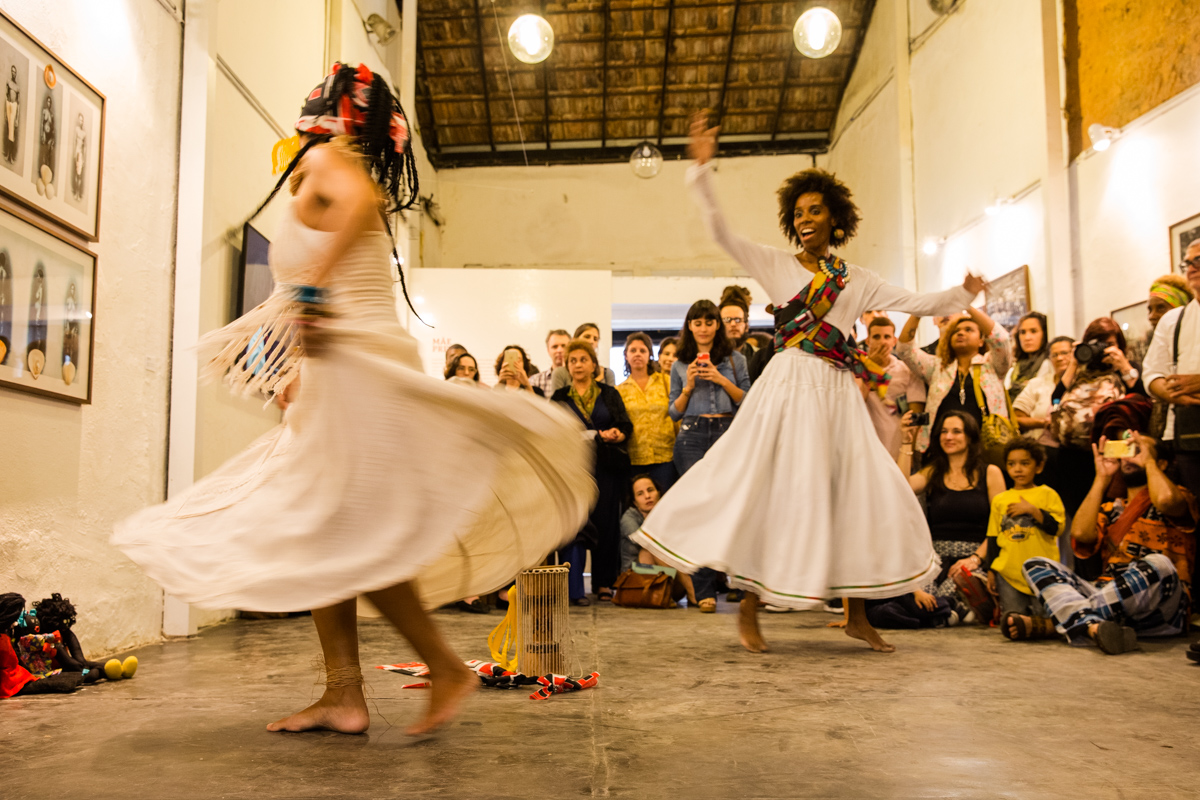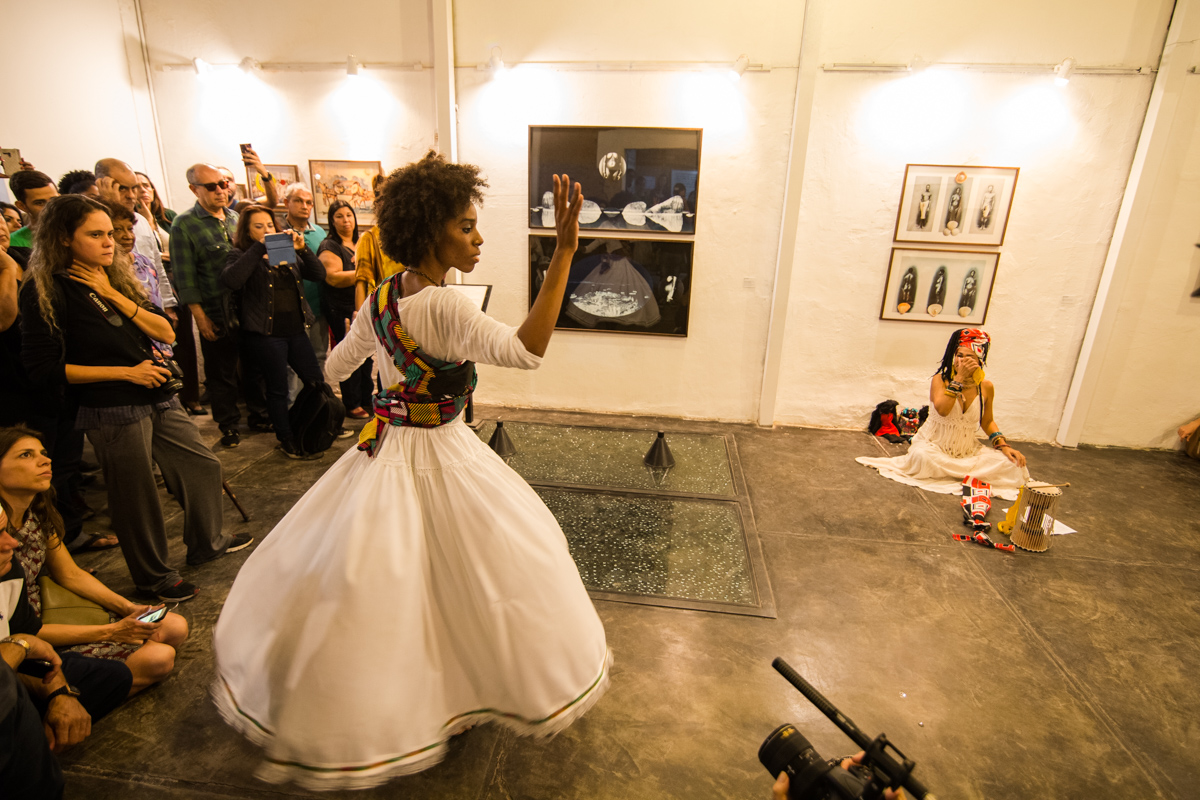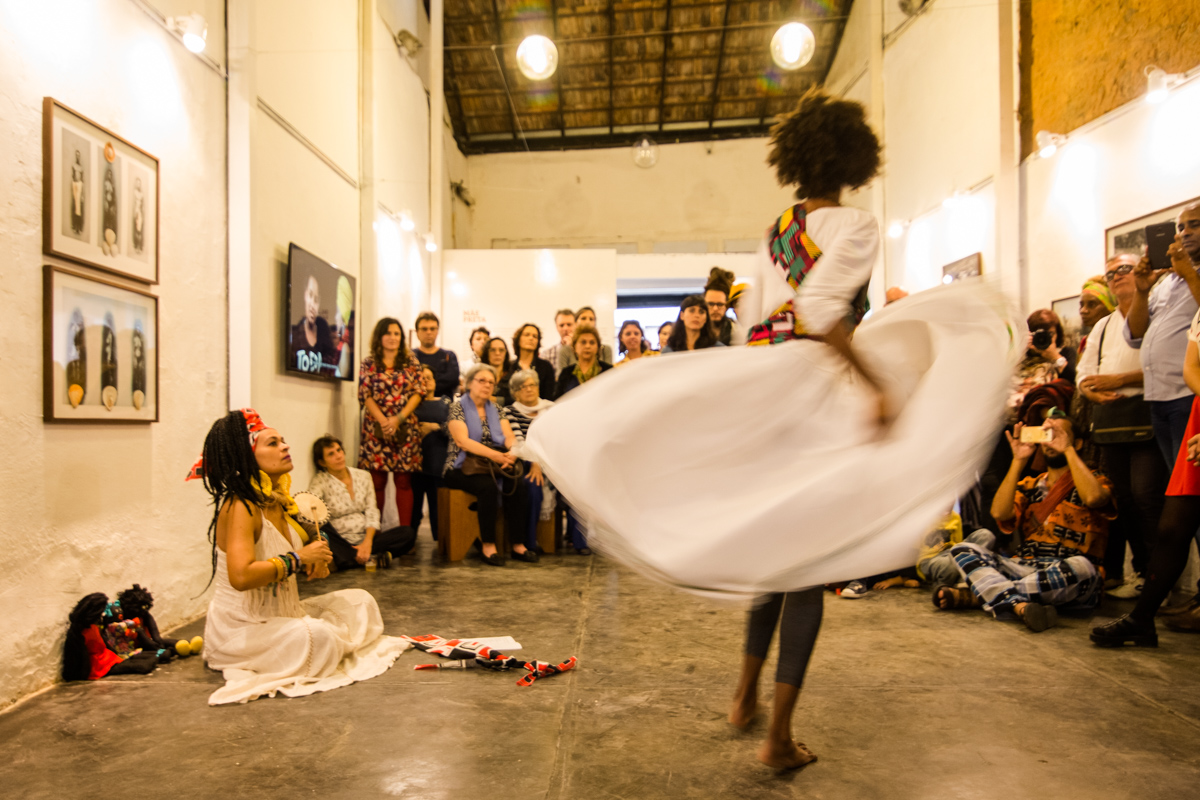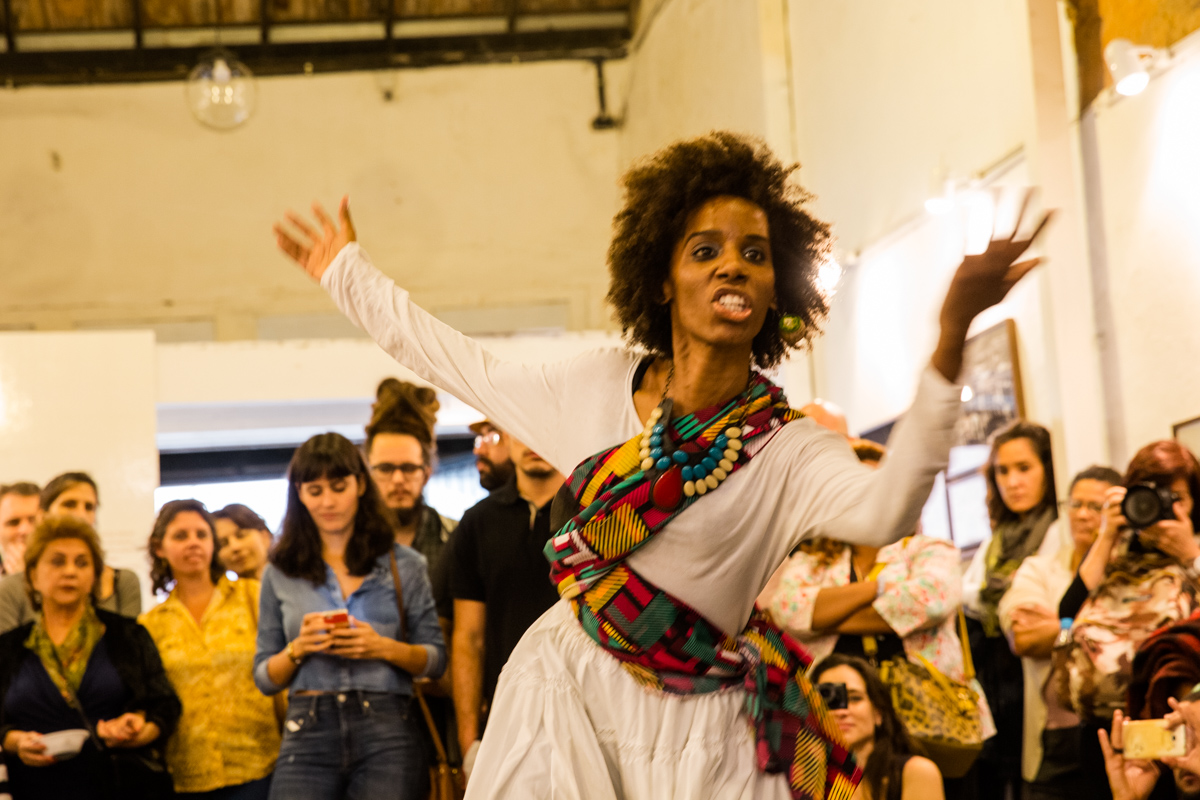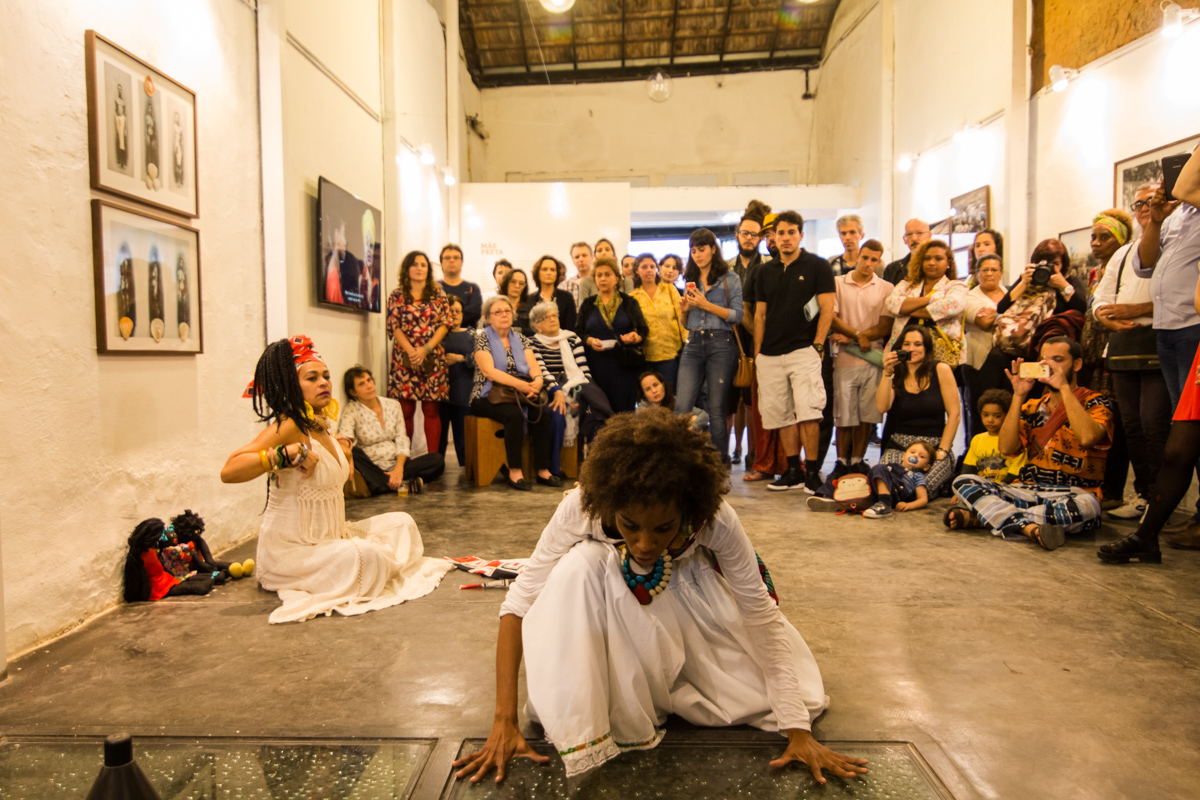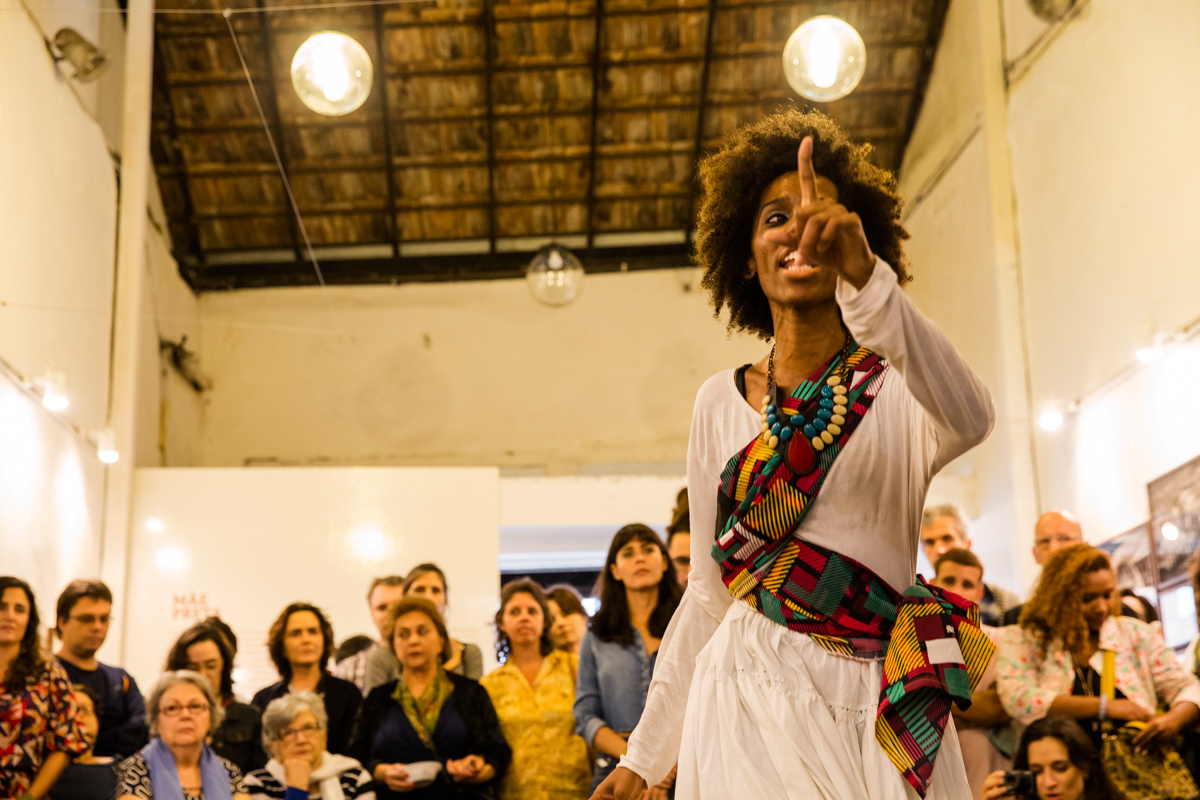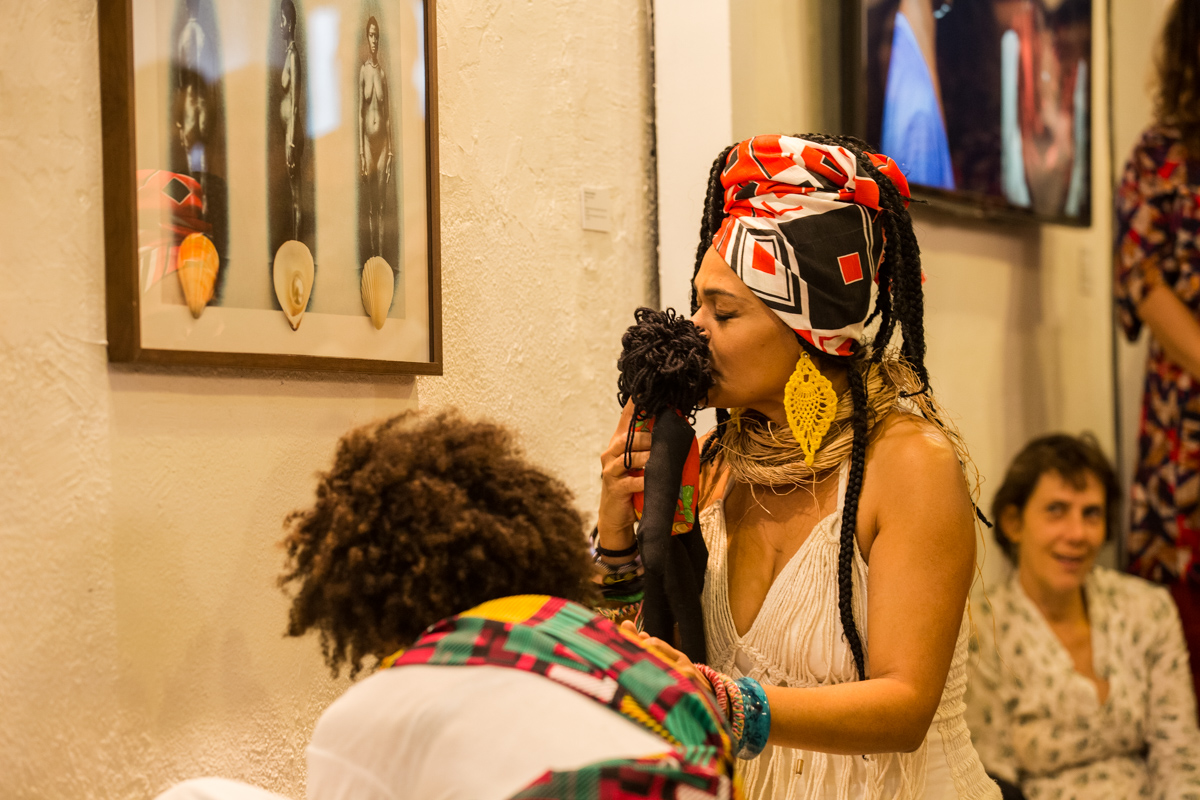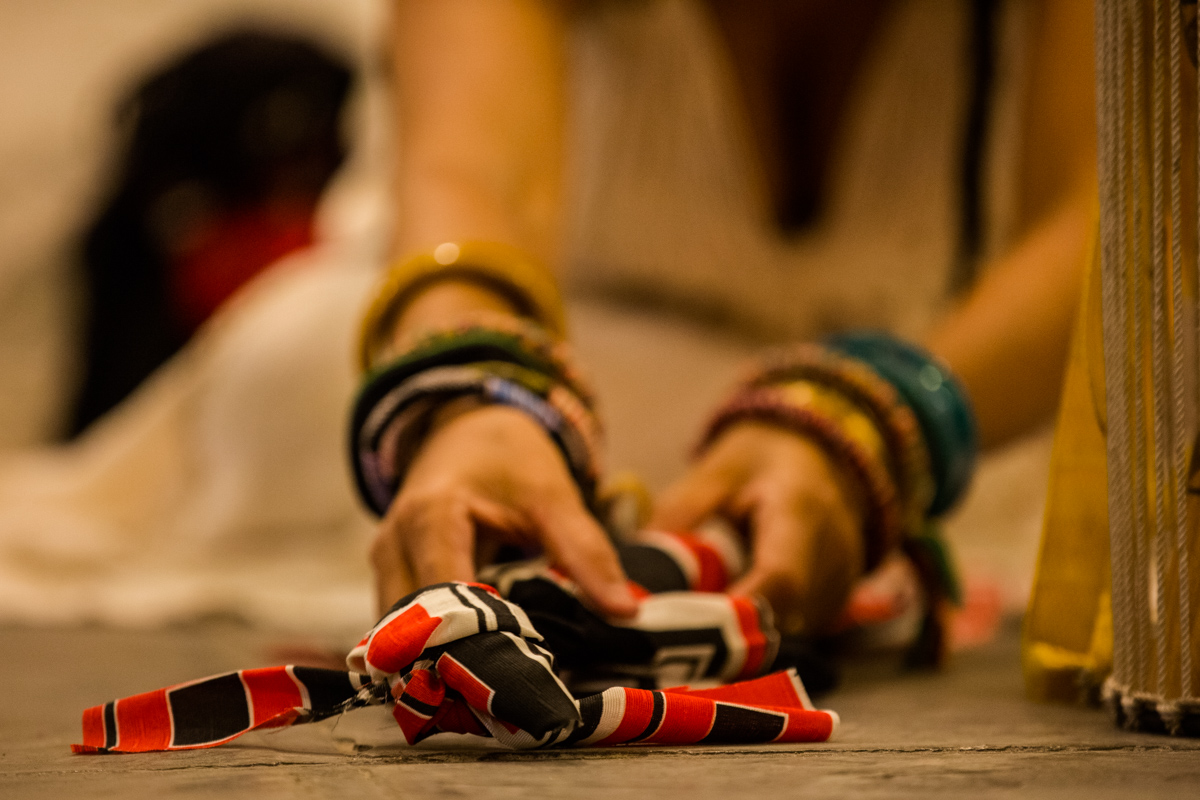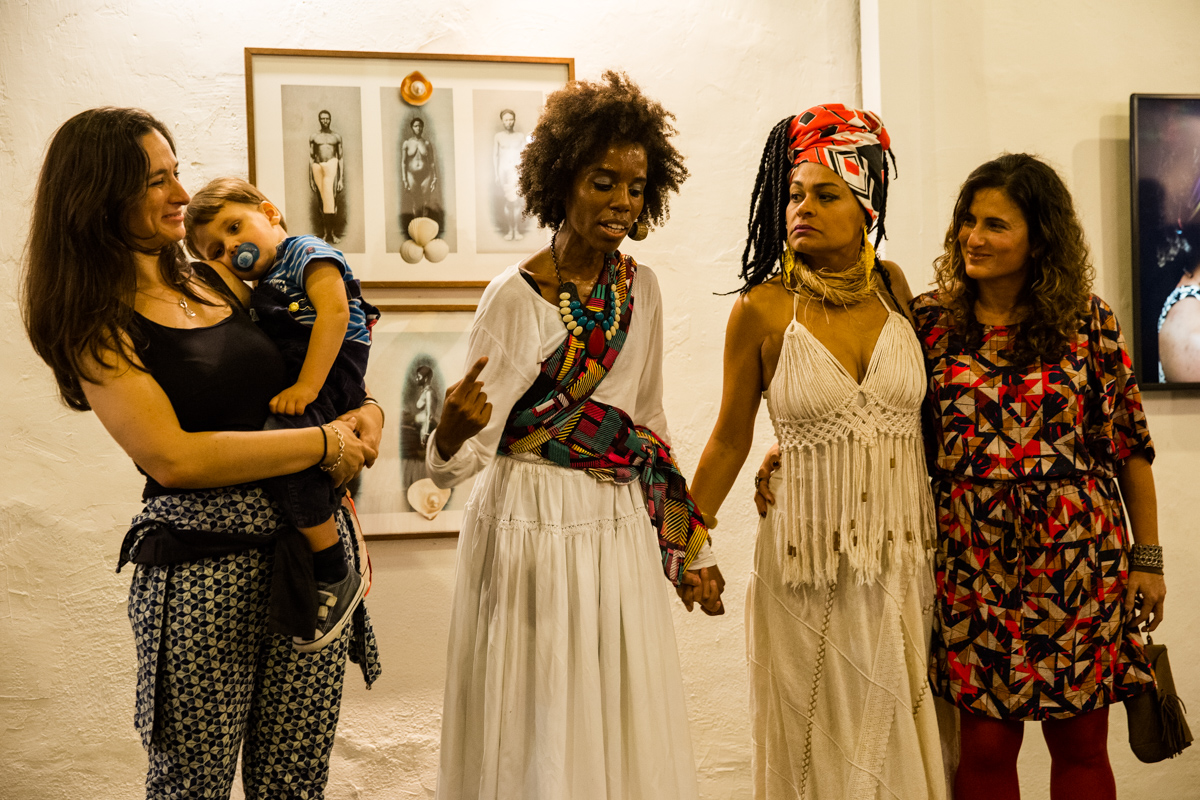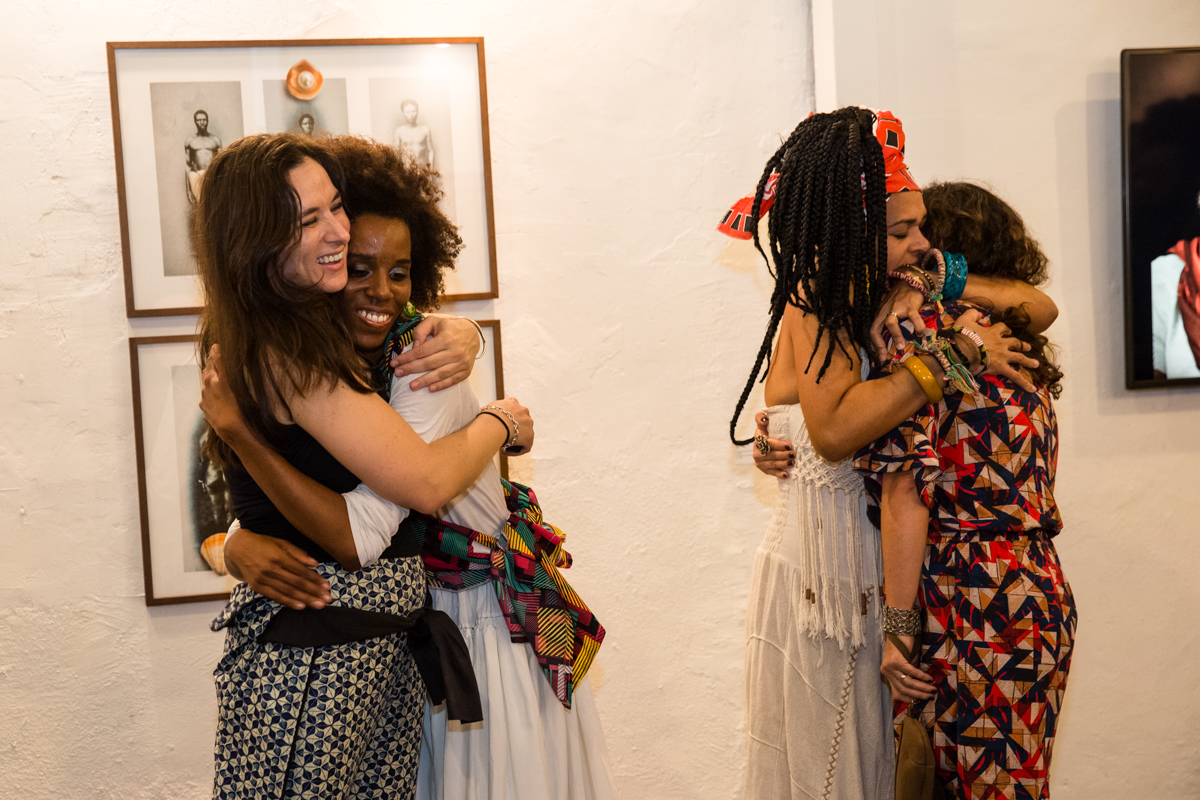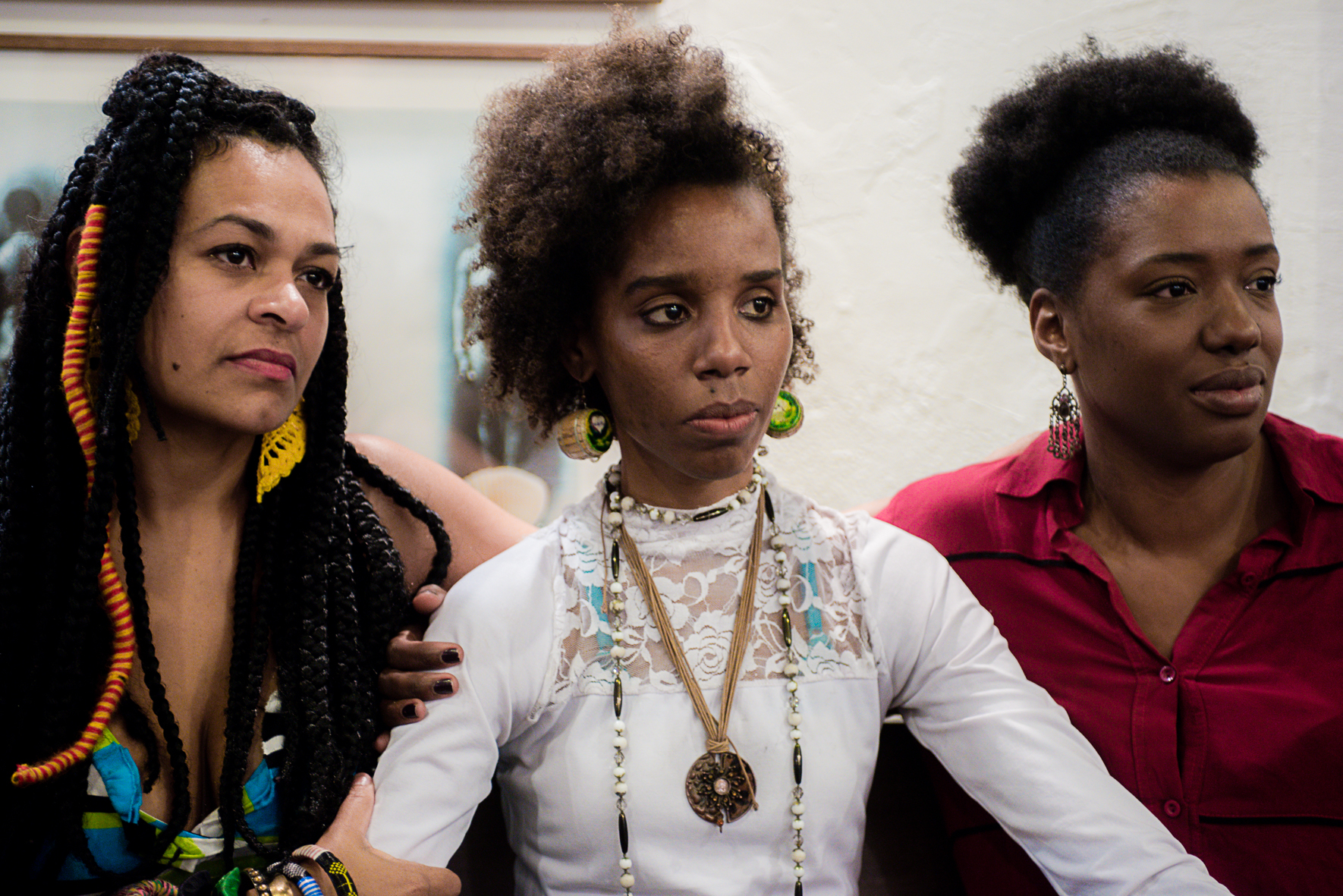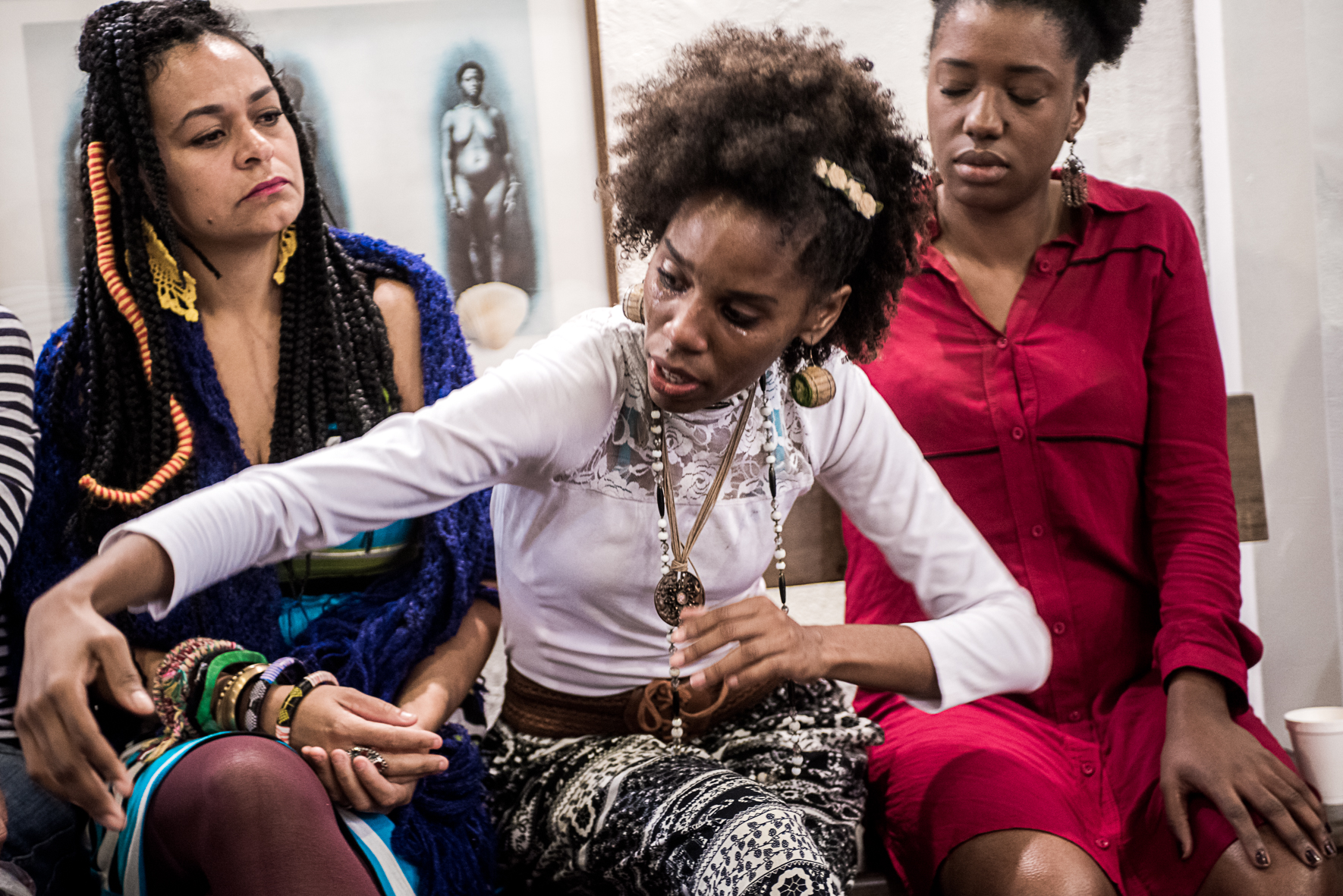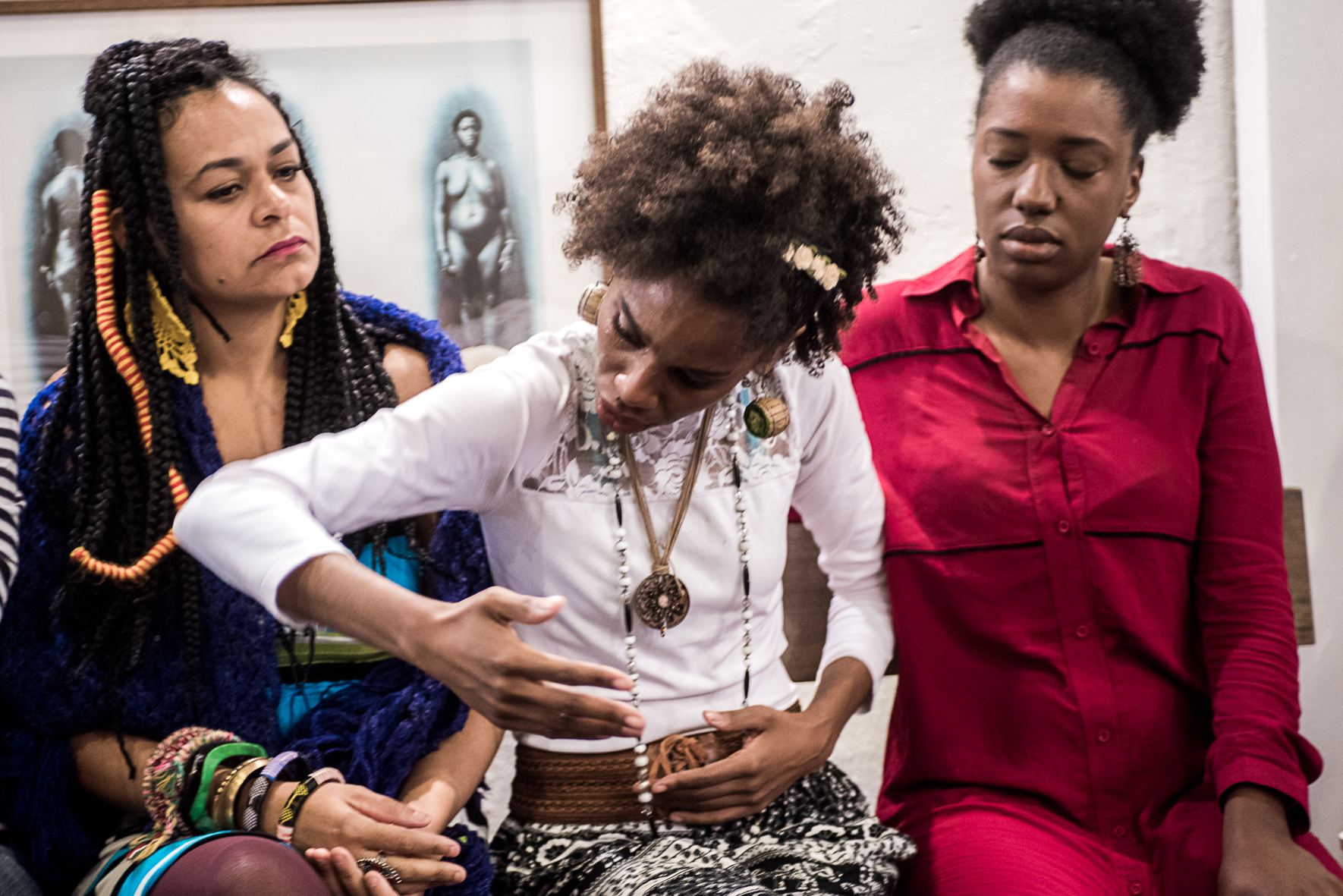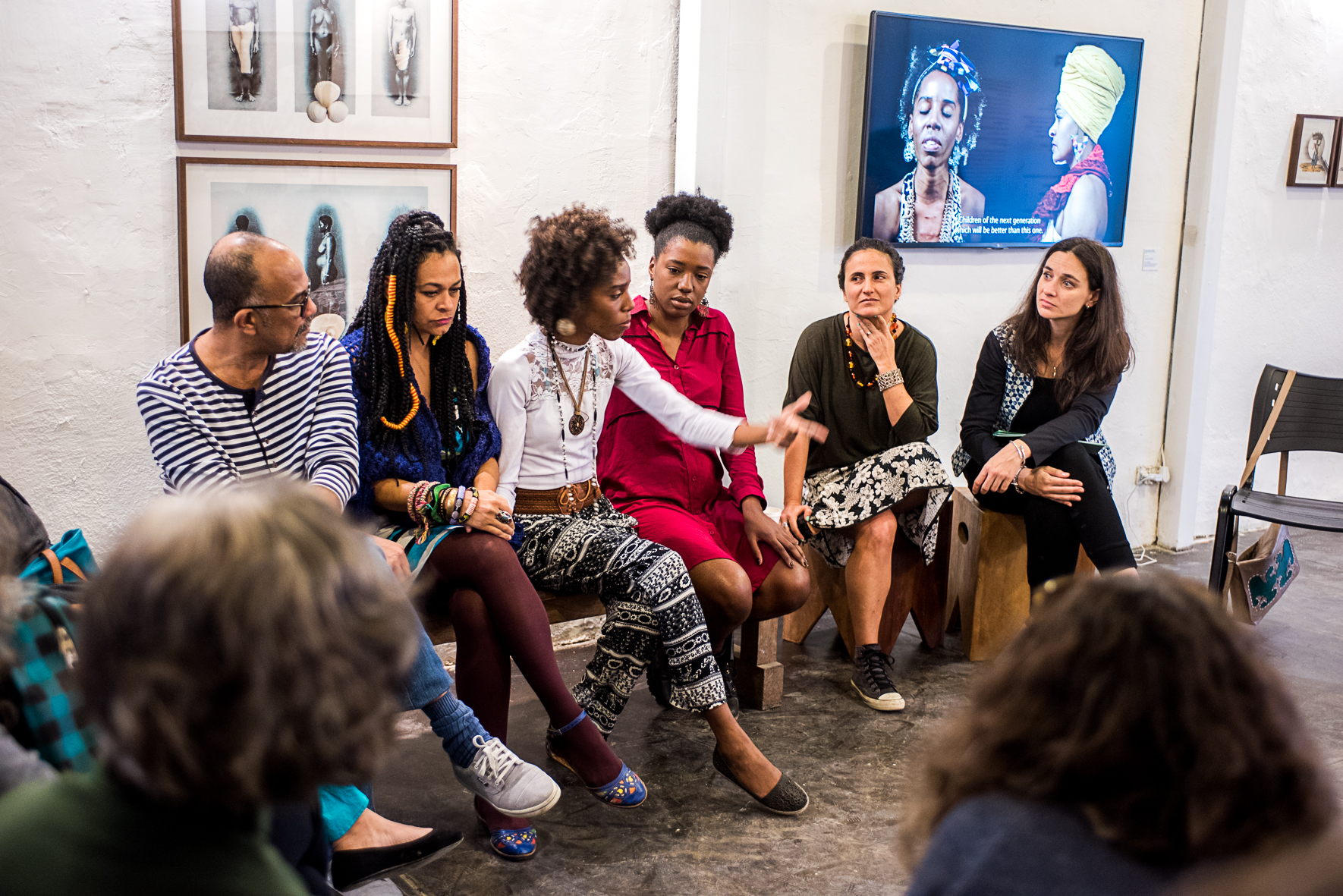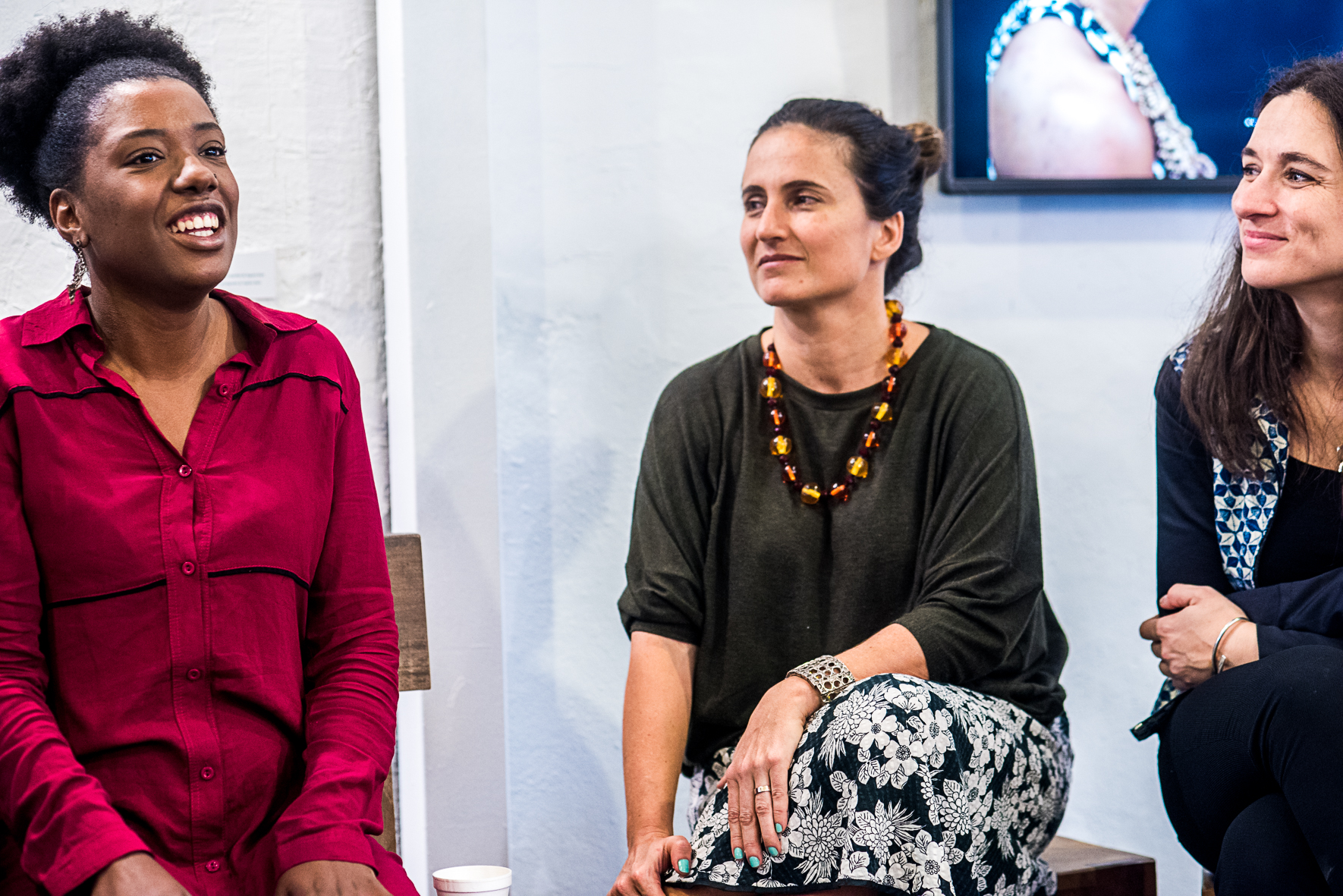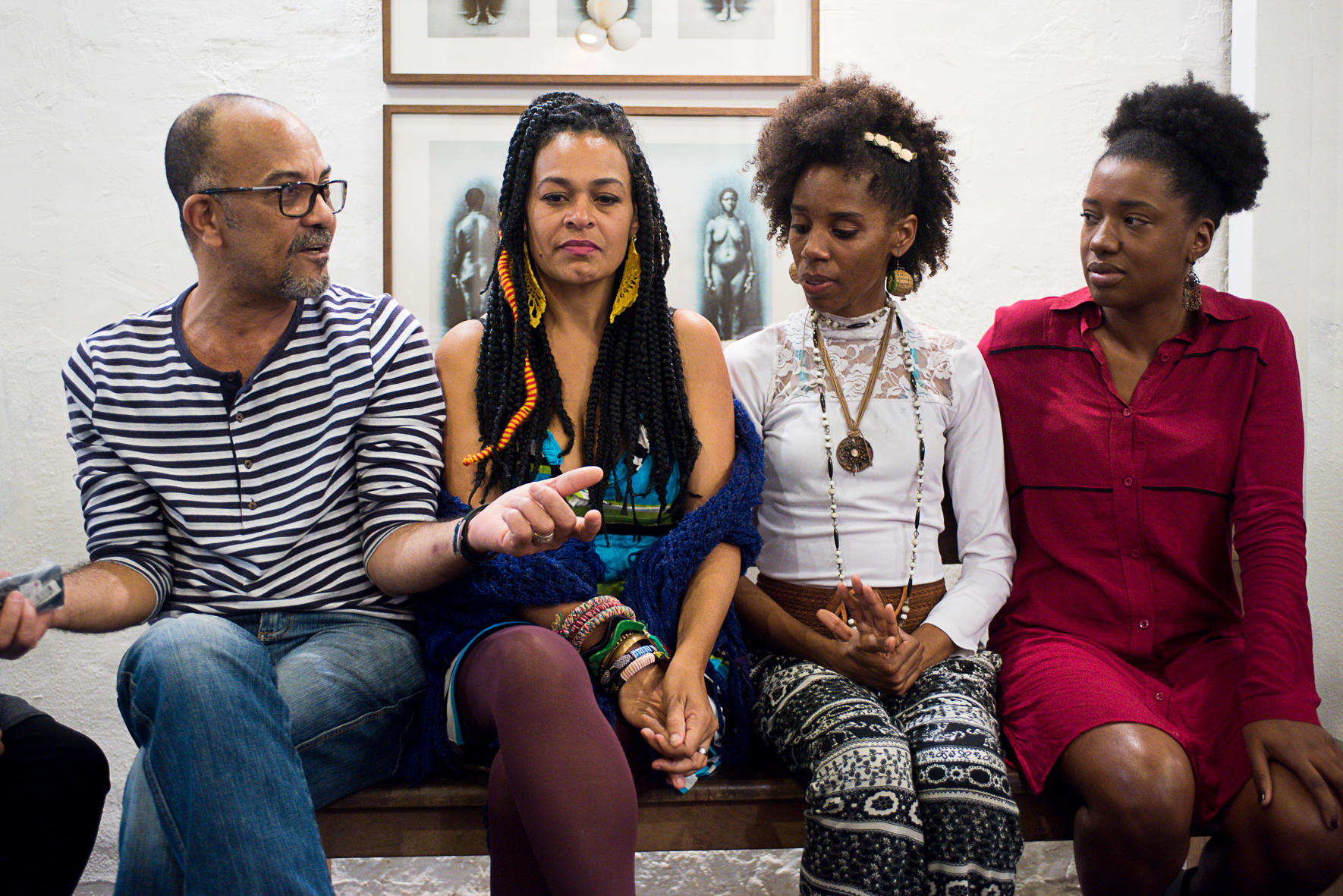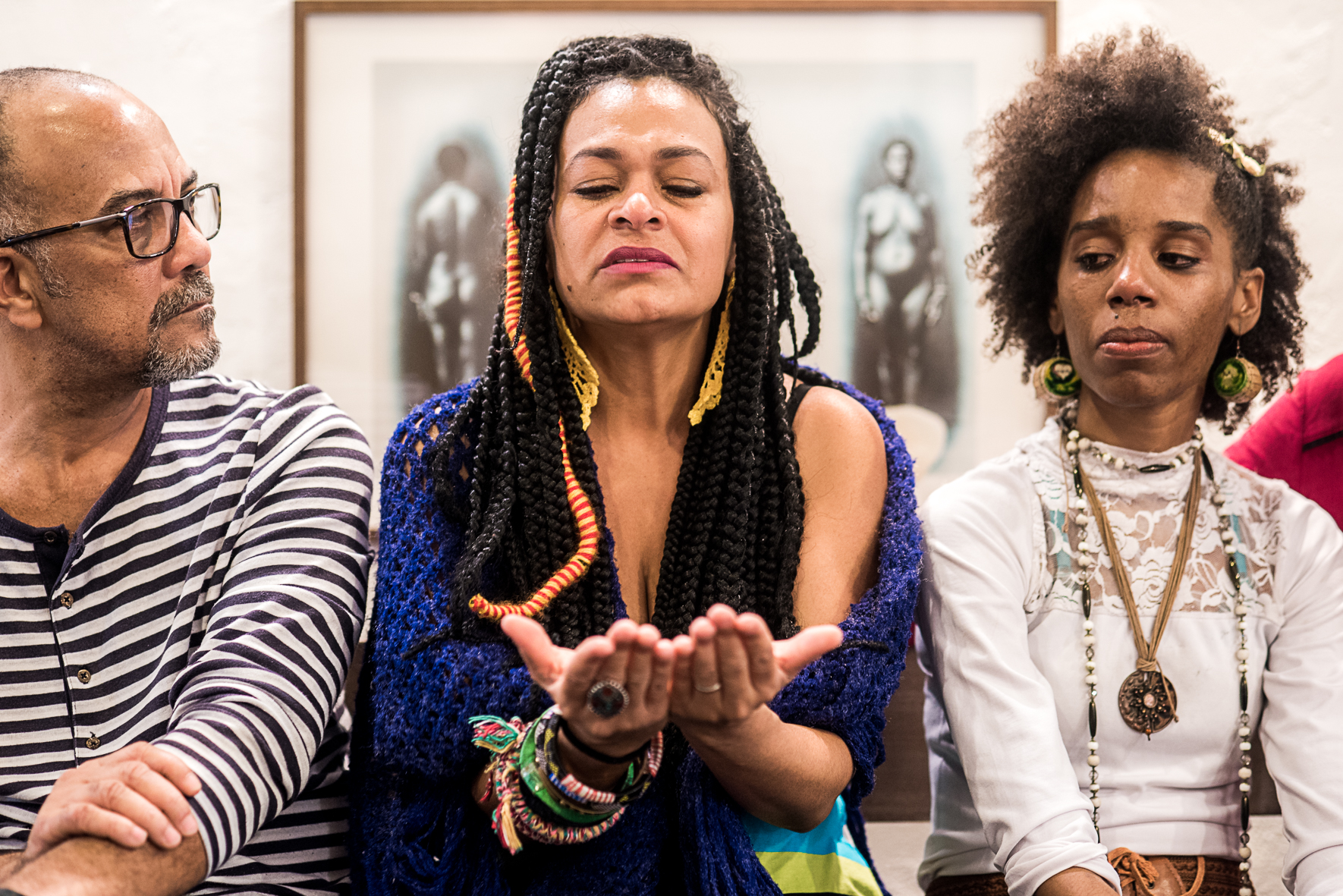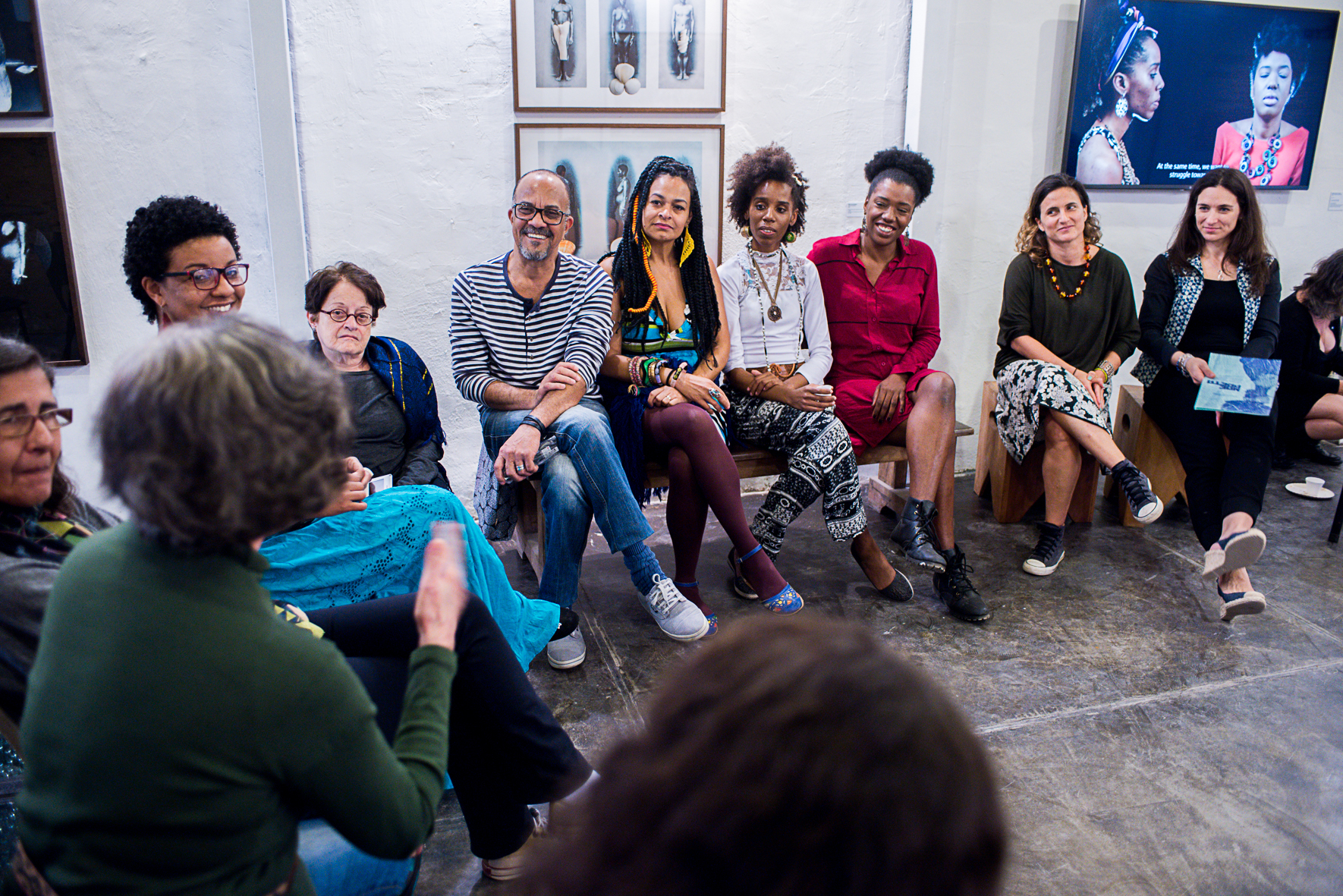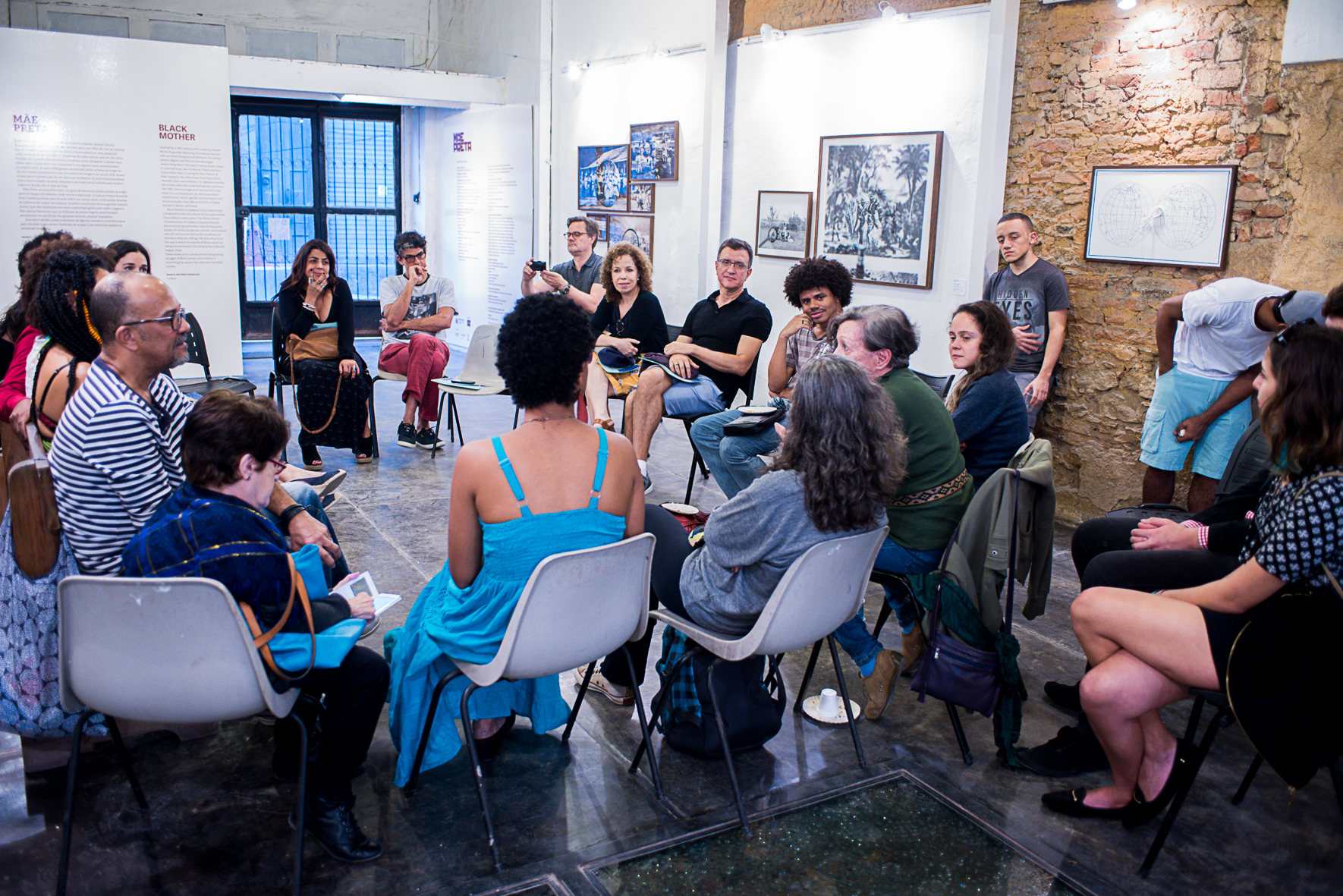Exhibitions
Black Mother
Curator: Marco Antonio Teobaldo
Instituto de Pesquisa e Memória Pretos Novos
Galeria Pretos Novos de Arte Contemporânea
Rio de Janeiro
July 23 - September 25, 2016
Exhibition views at the Pretos Novos Contemporary Gallery and the Pretos Novos Memorial Site.
Image Credits: André Ostetto Motta, Hans Georg, and Patricia Gouvêa
About the exhibition
The former Pretos Novos slave cemetery in Rio de Janeiro, the site for our first exhibition, was discovered in 1996 and is now part of the cultural heritage for the memory of slavery in Rio de Janeiro's now revitalized colonial port area. The cemetery's archaeological remains are part of the Instituto de Memória e Pesquisa Pretos Novos (IPN), and houses a memorial site, a study room, a research library and an art gallery, the Pretos Novos Contemporary Art Gallery.On this site, an estimated 30,000 enslaved Africans died on arrival after crossing the Middle Passage were buried in this cemetery in very shallow graves from 1799 to 1836.
In response to this site, Mãe Preta became an homage to all the women and children buried beneath the gallery floor by addressing the iconography of "black mothers" (mães pretas), those enslaved women working as wet-nurses during colonial times. They breastfed their masters’ children and as such provided the most vital life support of the colony during more than three centuries of slavery in the country. A pivotal character in the life of the colony, the wet nurse was at once the closest to the intimate life of the colonial family structure but very often deprived of a family and children of their own.
Several artworks included working with archival images in different media with the representation of Black motherhood during slavery, and were placed in response to the geography of the site. We resignified several well-known images containing wet nurse iconography in works by painters Johann M. Rugendas and Jean-Baptiste Debret, and photograhers Marc Ferrez among others. We interfered in these images with sacred and optical objects in the series Ways of Seeing, highlighting the duplicity and complexity of the maternal role during slavery.
To counter-balance to the historical research, a video with testimonials of contemporary Black mothers was presented, highlighting both contemporary and historical struggles through personal narratives. The video Ways of Speaking and Listening,is the main work in the exhibition. As one woman speaks, the other listens, and then the listener becomes the speaker while another listens, and so forth in a circular narrative.
The exhibition also extended beyond the gallery space into IPN's research library with a series of conceptual interventions. Within the collection of reference books, a new feminist section was created with new donations featuring titles of Black female authors and/or works where Black women or girls are protagonists.
In addition, the walls of the library gained a portrait gallery of Afro-Brazilian heroines that are not necessarily well-known to a wide audience. They range from saints such as Anastácia, to 18th century rebellion leaders such as Tereza Benguela and N'zinga of Angola up to 20th century feminists such as Lélia Gonzalez and Beatriz do Nascimento, among others. Together, they make visible a history of social achievements, struggle and resistance by Afro-Brazilian women which are part of the history of the Brazil.
Collaborators
In this exhibition, we worked closely with Marco Antonio Teobaldo, the exhibition curator and the IPN staff. We partnered with the image archives of the Instituto Moreira Salles, holder of one of the largest photographic collections in Brazil, a country that houses the largest collection of images of slavery in the world.
We also collaborated with local Afro-Brazilian grassroots feminist movements and independent performers, especially Glauce Pimenta Rosa and Jessica Castro, who made a performance in the opening of the exhibition, and who have since then become permanent collaborators of project.
The exhibition received approximately 2,000 visitors, having been shown partly during the period of the Olympic Games of 2016.
A publication was issued with the exhibition with the contribution of writer Alex Castro and historian Júlio César Medeiros, author of a book about the Pretos Novos the cemetery.
The video is made in collaboration with Swedish artist Mats Hjelm.
Performance
Performance by Jessica Castro e Glauce Pimenta Rosa.
23/07/2016
Image Credit: André Ostetto Motta, 2016
Glauce Pimenta Rosa opens the exhibition with the chant of Eleguá, followed by a recitation of the poem "Voices-Women" by Afro-Brazilian author Conceição Evaristo. During her performance, Glauce tells of the story of the Abayomi rag dolls which mothers made from scraps of fabrics and gave it to their children as a reminder of their existence while still aboard the slave ships before being separated and sold on arrival.
Jessica Castro complements with a powerful improvised dance and chant that includes her own interpretation of the musical tradition Jongo, known to be one of the oldest music forms in the Brazilian African diaspora. Jessica also gave a powerful political speech during her dance about contemporary feminist struggles.
Together, Glauce and Jessica related their performances back to the suffering and memory of children and mothers whose bodies rest in the archaeological remains of the memorial site below.
Conversation between collaborators and artists
Image credits: Marian Starosta
In this evening, the artists invited collaborators in the video and performance, the dancer Jessica Castro, the multiartist Glauce Pimenta Rosa and the braider Gabriela Azevedo, moderated by our producer, Carlos Chapéu. For two hours, our guests shared their experience in participating in the project, which included prayers, chanting, poetry and testimonials. The audience contributed actively in the conversation with personal experiences, manifestos, questions and reflections.
Opening night
25/07/2016
Image credits: Marian Starosta
In this evening, the artists invited collaborators in the video and performance, the dancer Jessica Castro, the multiartist Glauce Pimenta Rosa and the braider Gabriela Azevedo, moderated by our producer, Carlos Chapéu. For two hours, our guests shared their experience in participating in the project, which included prayers, chanting, poetry and testimonials. The audience contributed actively in the conversation with personal experiences, manifestos, questions and reflections.
Credits
Vídeo instalação “Modos de fala e de escuta”| Videoinstallation “ Ways of Speaking and Listening”
Em colaboração com | In colaboration with: Mats Hjelm
Participantes | Participants: Carla Gomes, Cristiana Rosendo da Silva, Gabriela Azevedo, Glauce Pimenta Rosa, Jessica Castro, Michelly Ferreira Alves, Nidia Mara Santos
Edição de vídeo | Video Editing: Mats Hjelm
Assistência de estúdio | Studio assistance: Gabriel Villar
Edição de som | Sound editing: Marcus Nabuco
Agradecimentos | Thanks to: Merced e Petrucio Guimarães, Glauce Pimenta Rosa, Sergio Burghi e Virginia Maria Albertini, Milton Guran, Maria José Antunes, Maria Joana Avelino de Mendonça Gomes, Ana Hupe, Leno Veras, Yvonne Bezerra de Mello, Nelson e Marylene Gouvêa, Laercio Redondo e Birger Lipinski, Ana Luisa Dias Leite, Bianca Coutinho Dias, César Duarte, Jarid Arraes, Sandra Koutsoukos, Fernanda Chemale, Irene Santos, Marian Starosta, Otávio Nazareth, Aline Motta, Marcelo Abdo Centeio, Thiago Van Tyler, Margo Margot, Coletivo Saaanta Mãe, Grupo Brasileiras Feministas no Exterior, Kerstin Gezelius, Cecilia Edefalk, Anderson Silva, André Luiz Xavier Costa, Ifá Ni L’Órun, Casa de Padre Pio, Iyá Josélia, Alberto Silva.
Webdesign: Isabel Löfgren
Crédito de imagens | Photos: André Ostetto Motta, Isabel Löfgren, Marian Starosta, Mats Hjelm e Patrícia Gouvêa
Parceria | Partners:
Ateliê da Imagem Espaço Cultural
IASPIS | The Swedish Art Grants Committee
Editora Olhares
FotoRio
Instituto Moreira Salles
Le Cadre Molduras
Pallas Editora
Quimera Empreendimentos Culturais
Realização | Executed by: Instituto de Pesquisa e Memória Pretos Novos
Patrocínio | Sponsor: Prefeitura da Cidade do Rio de Janeiro e Secretaria Municipal de Cultura


